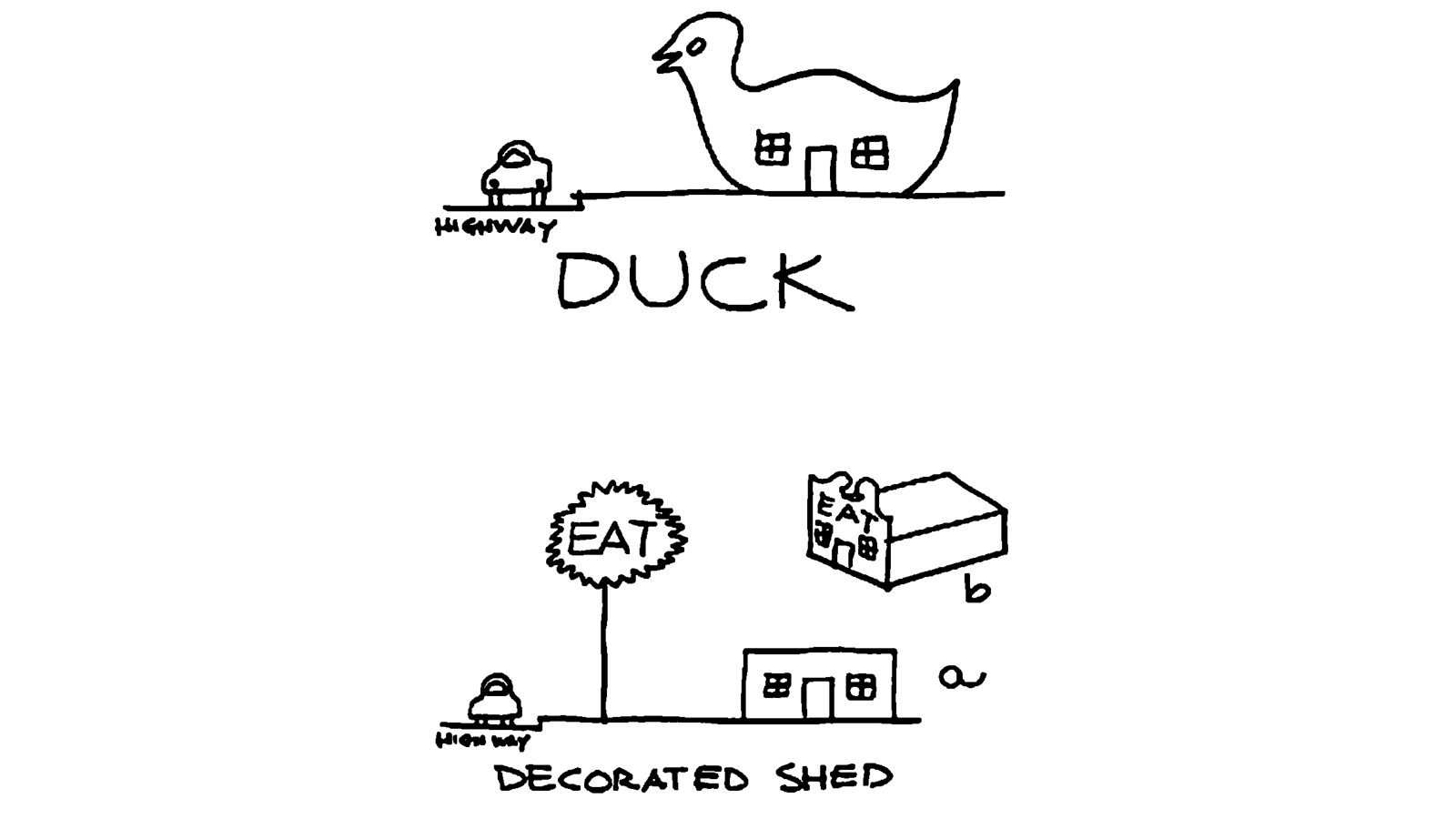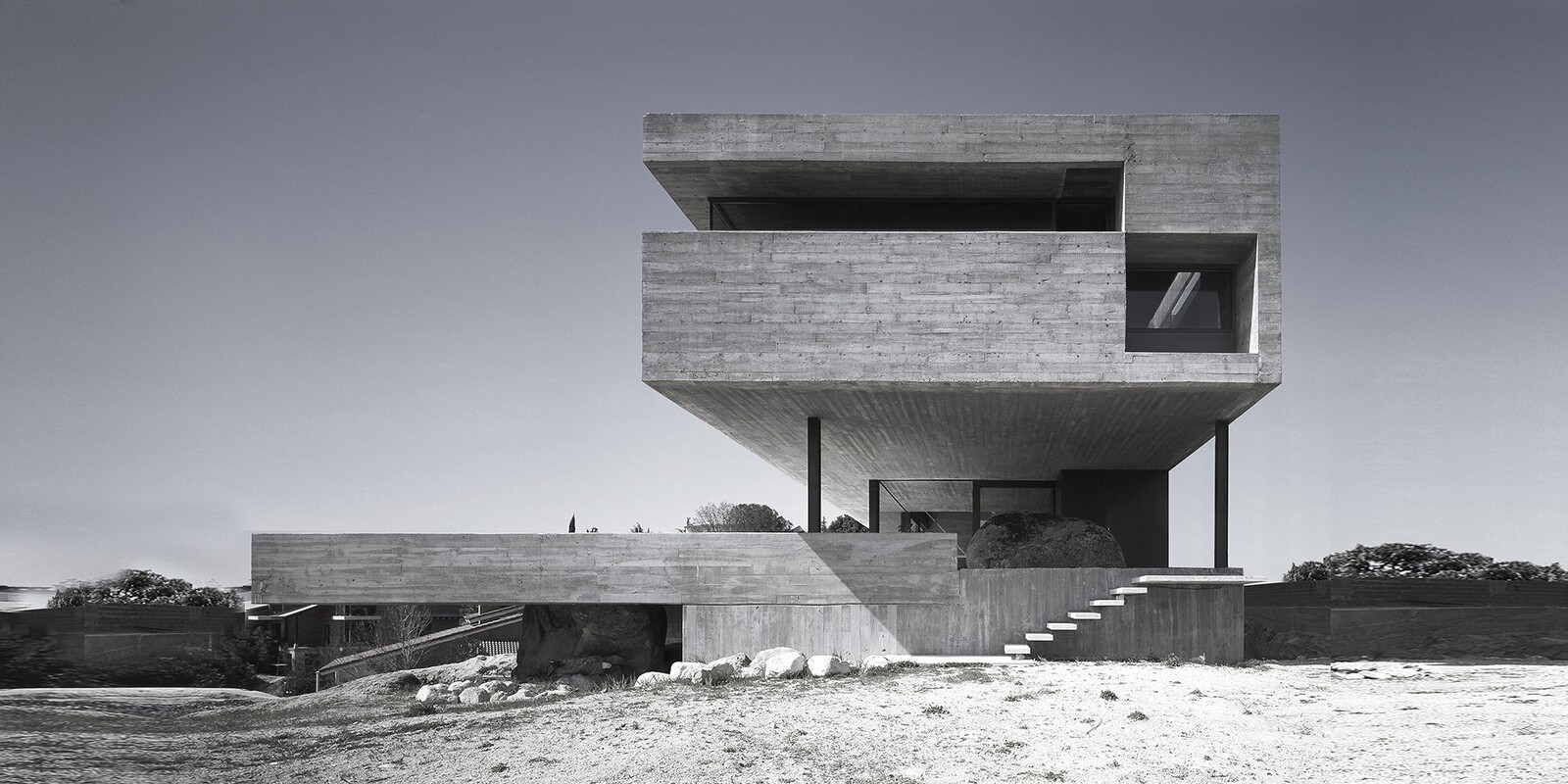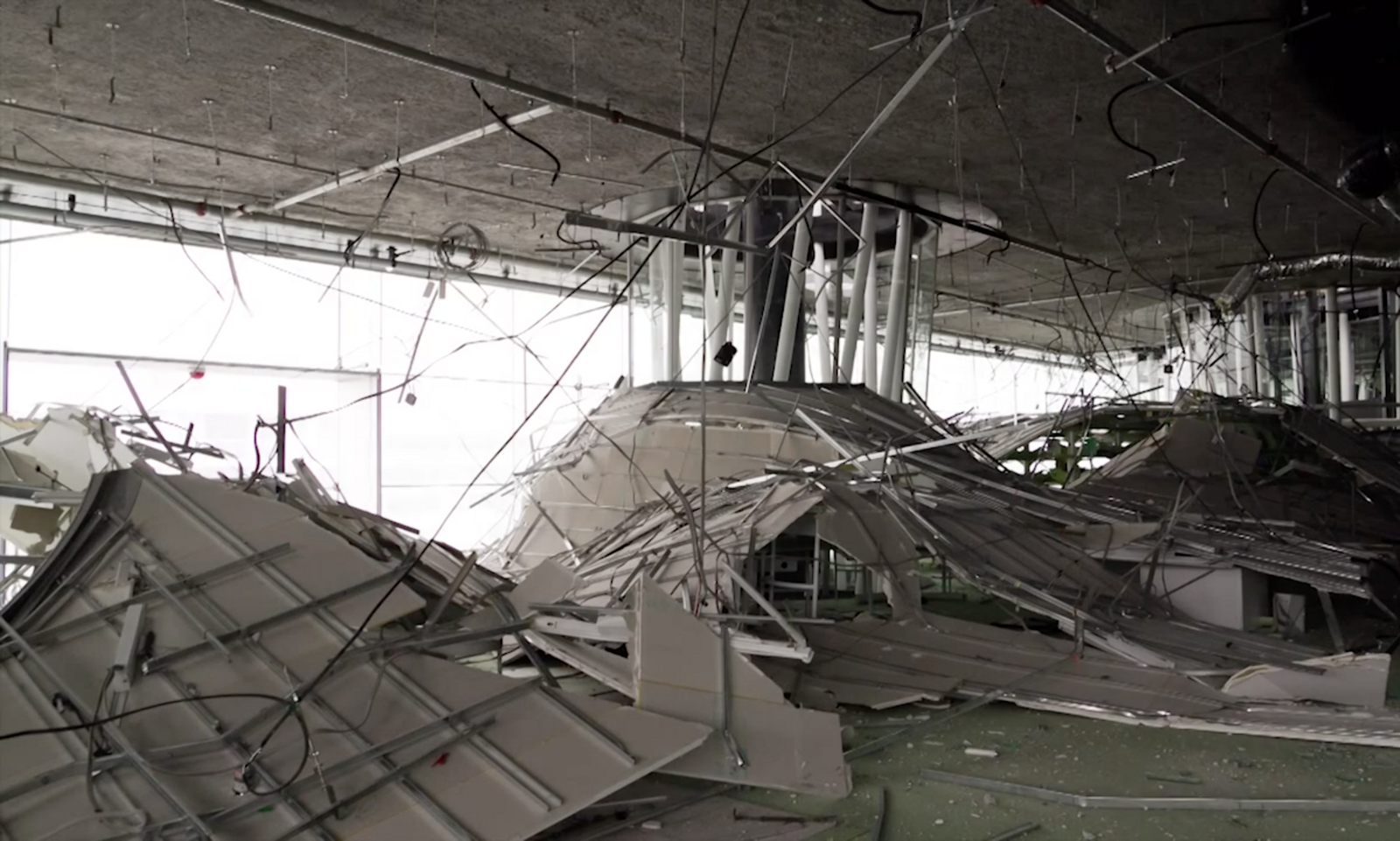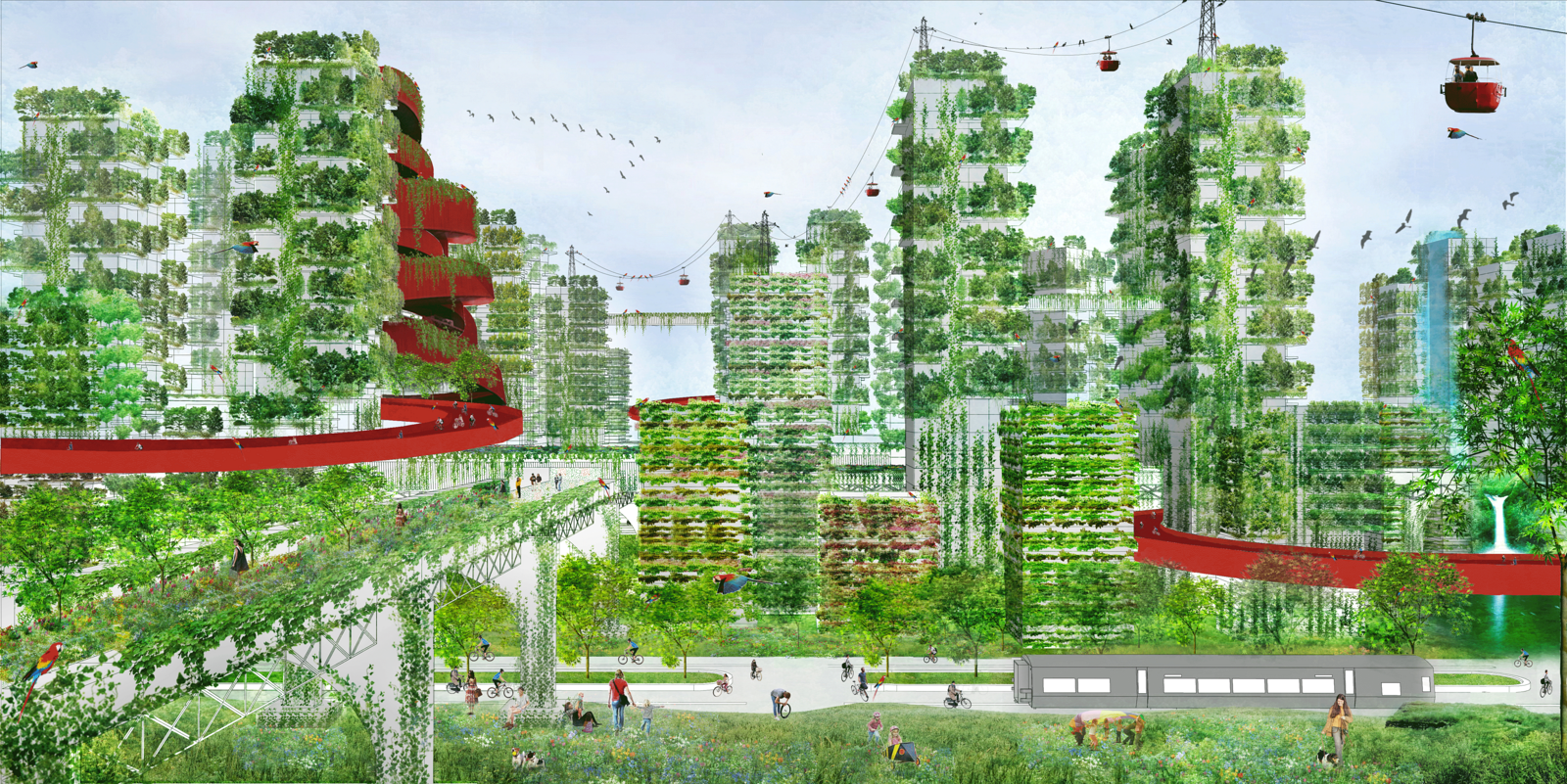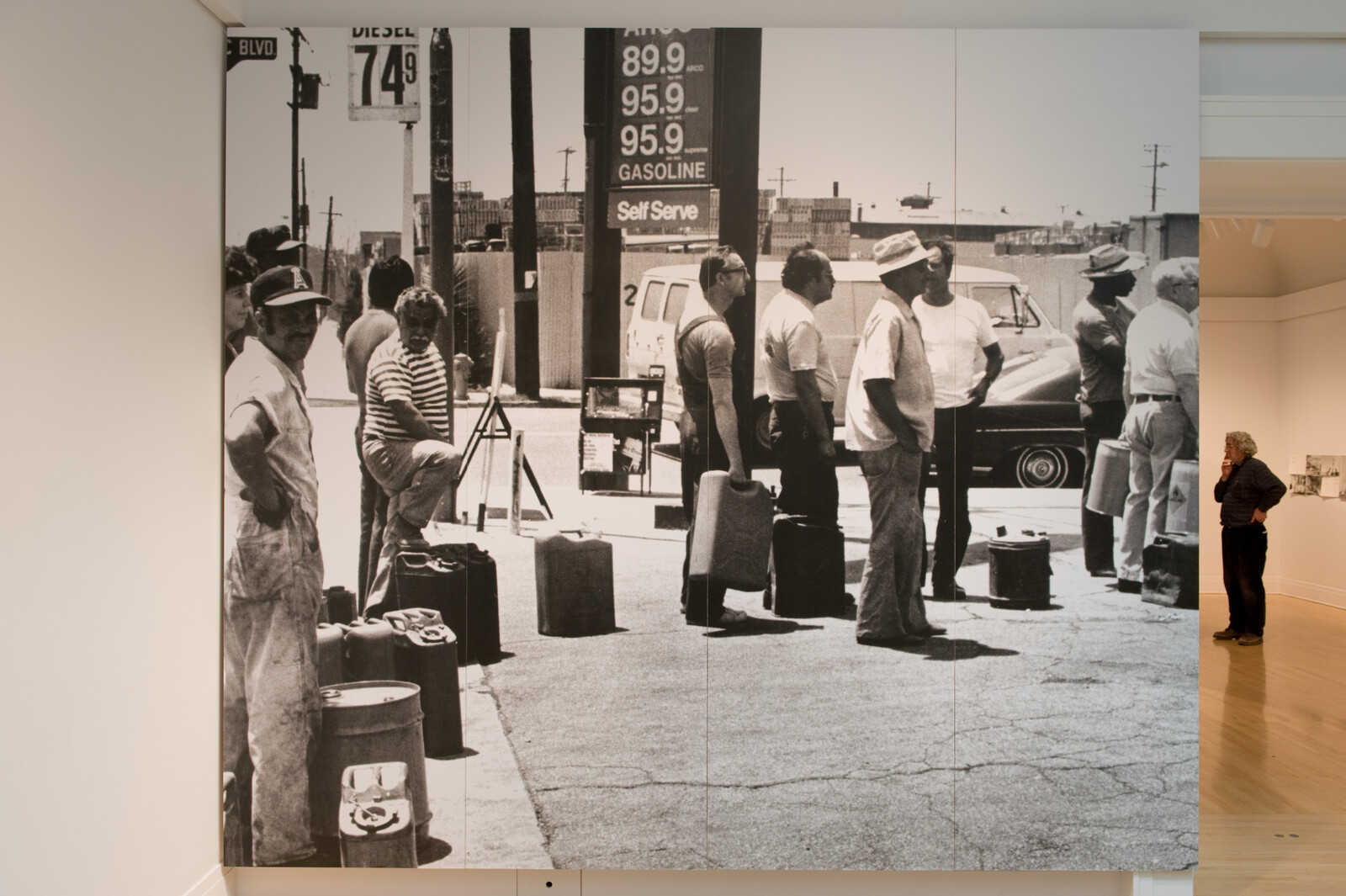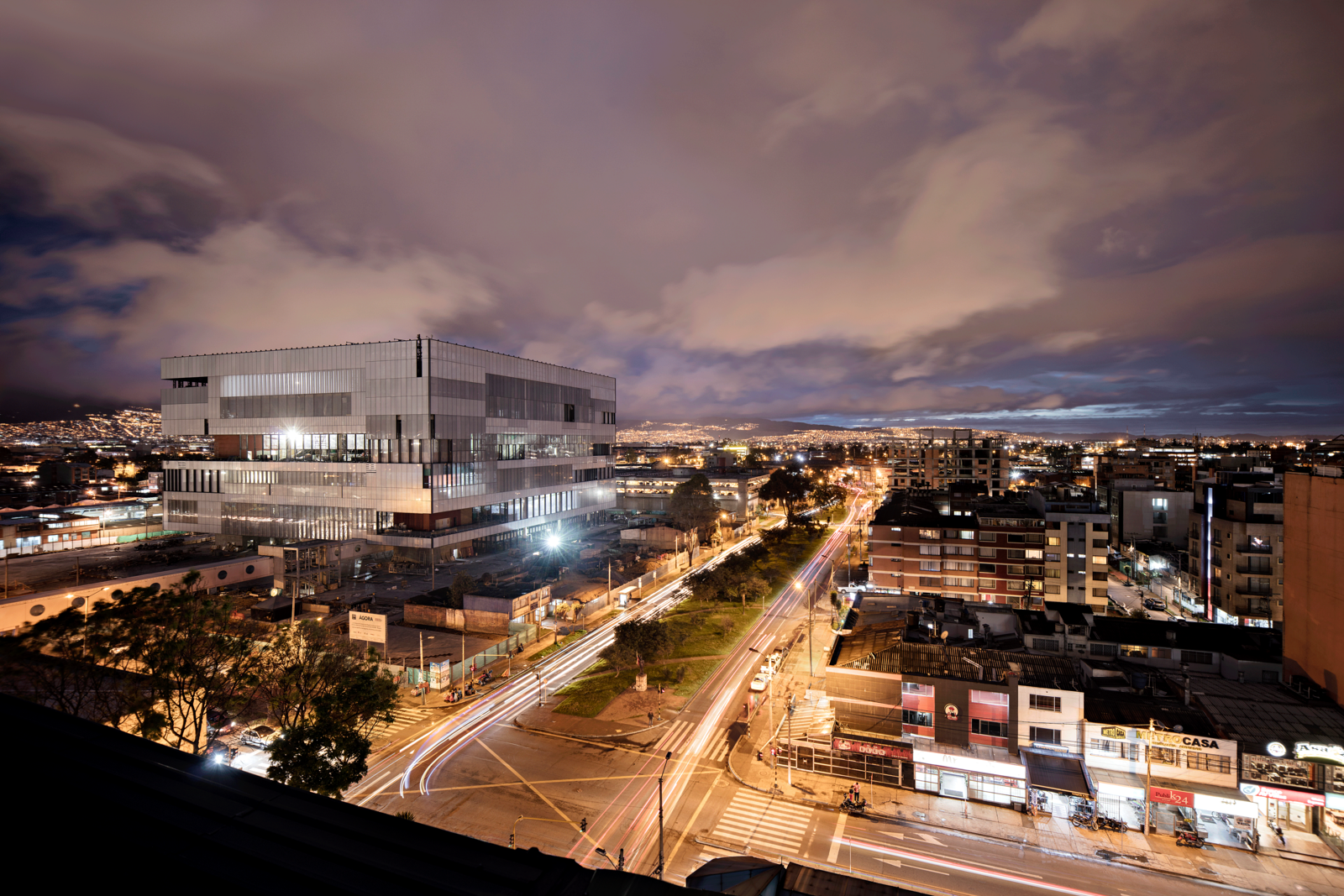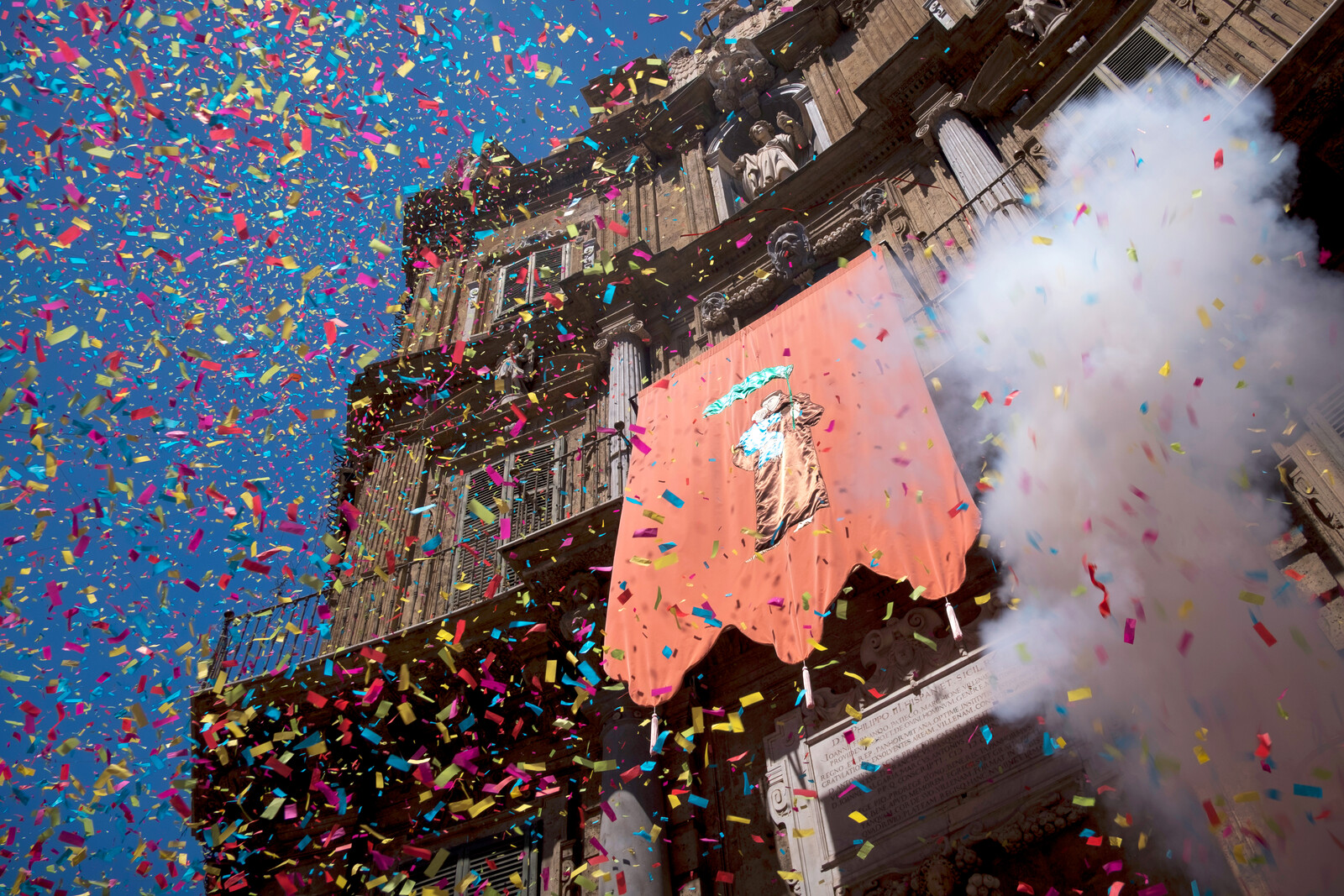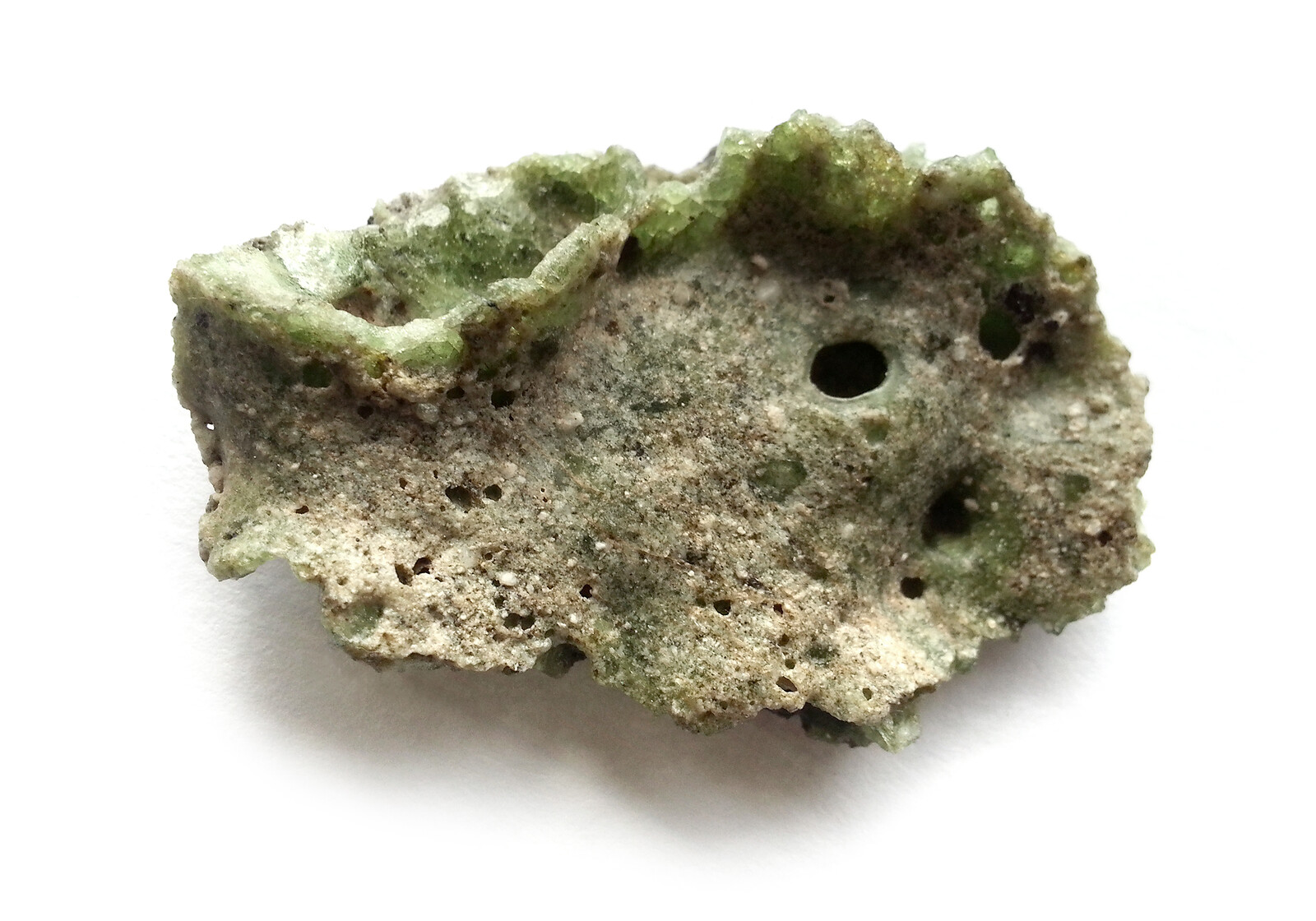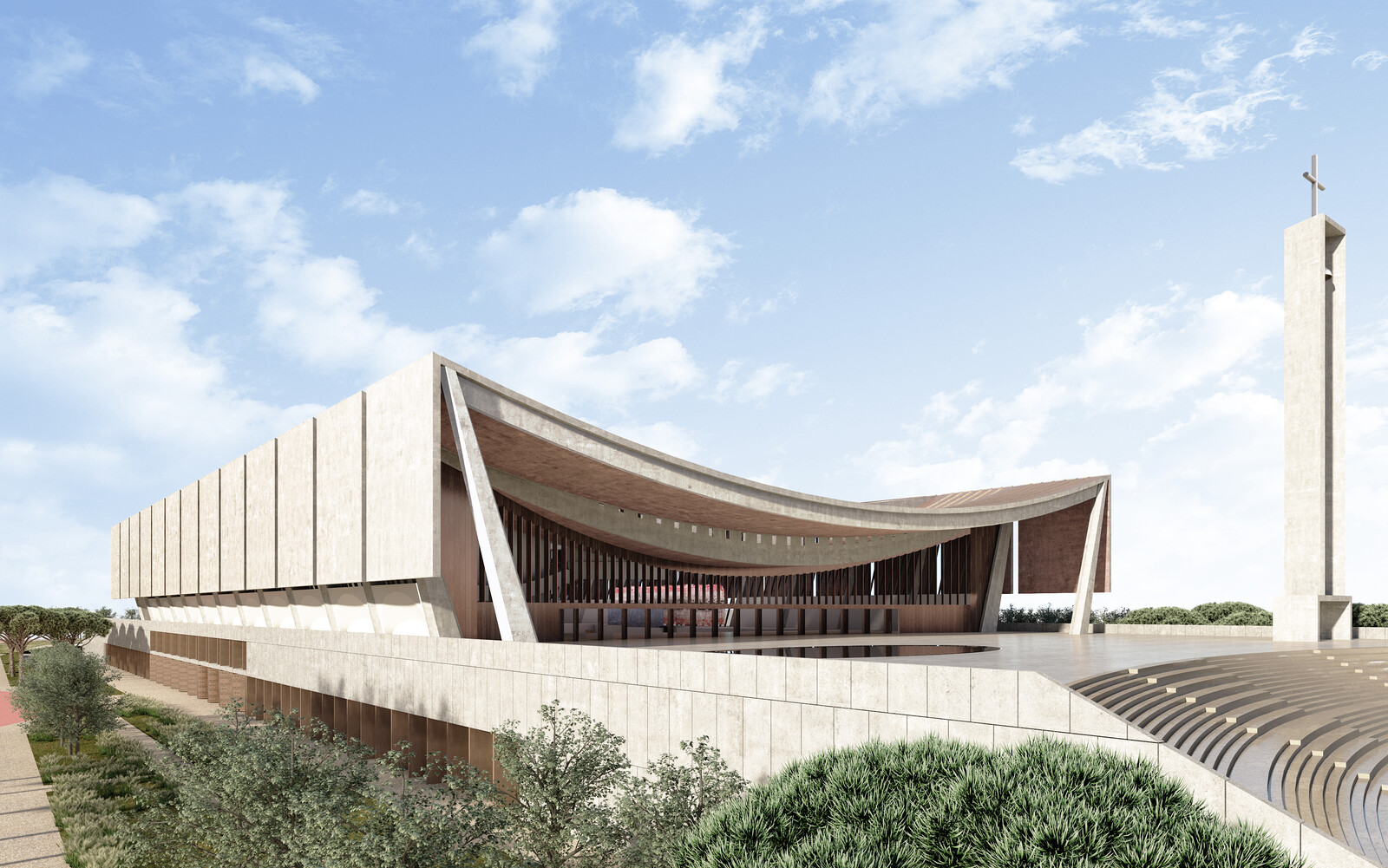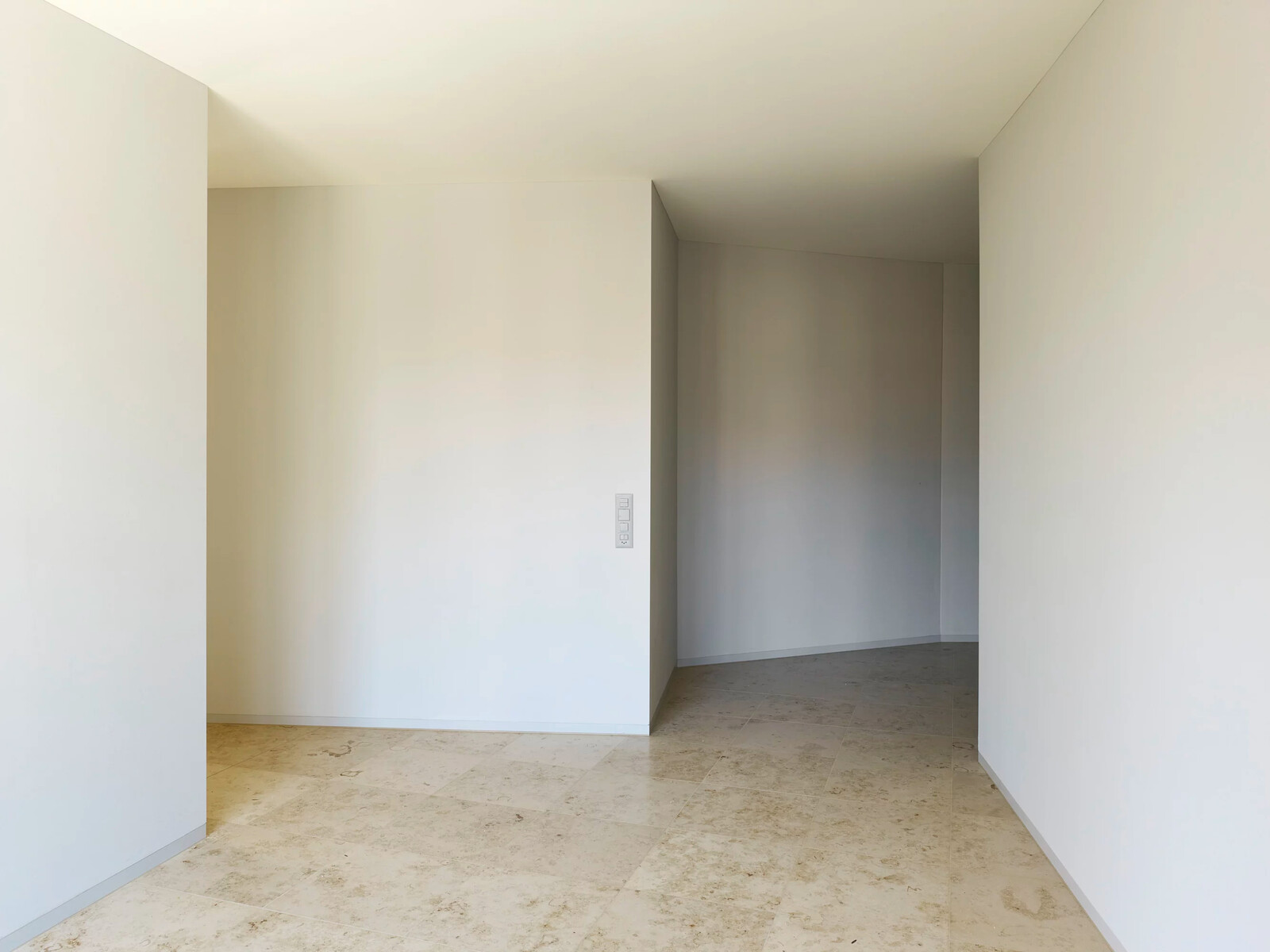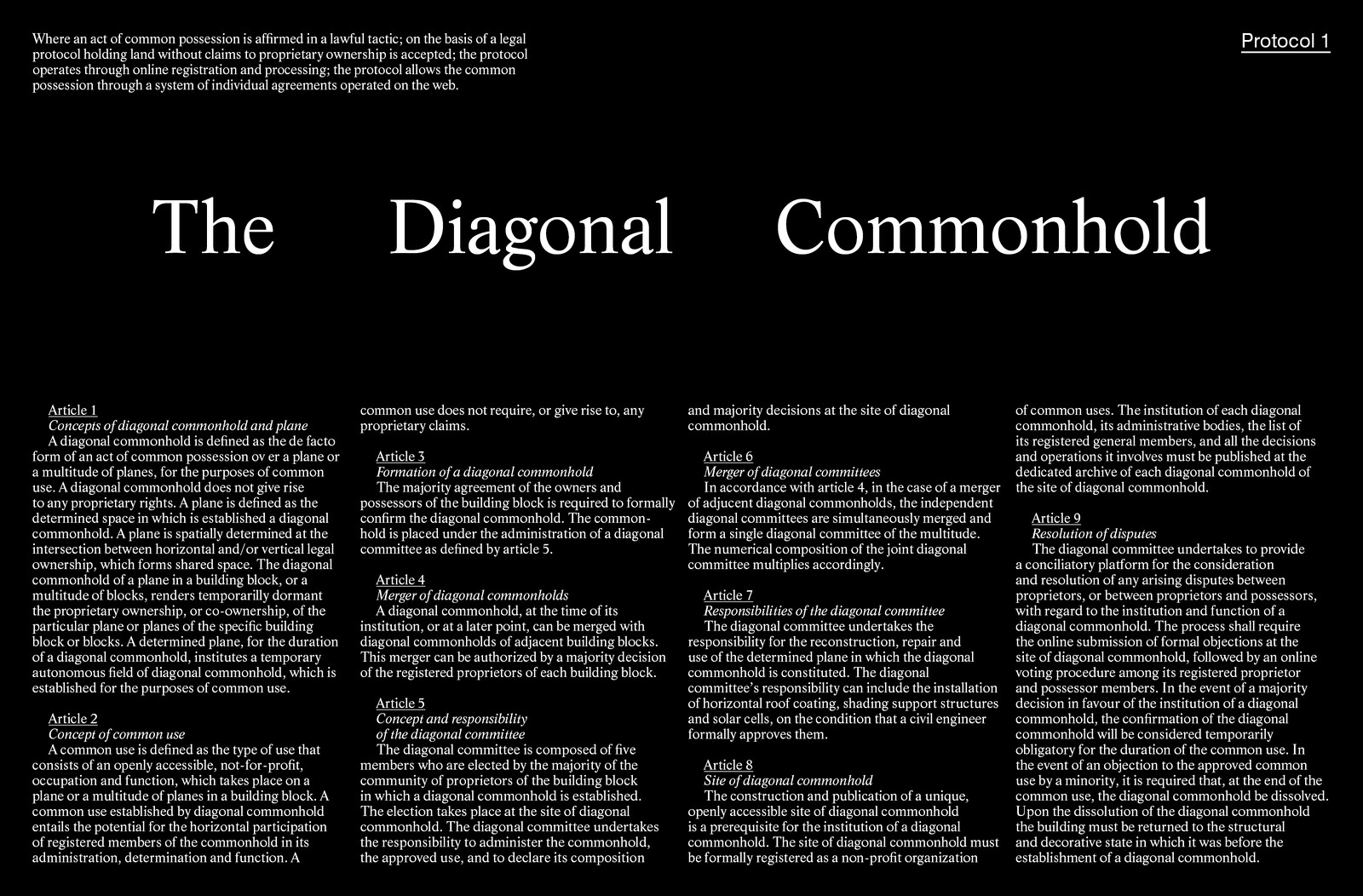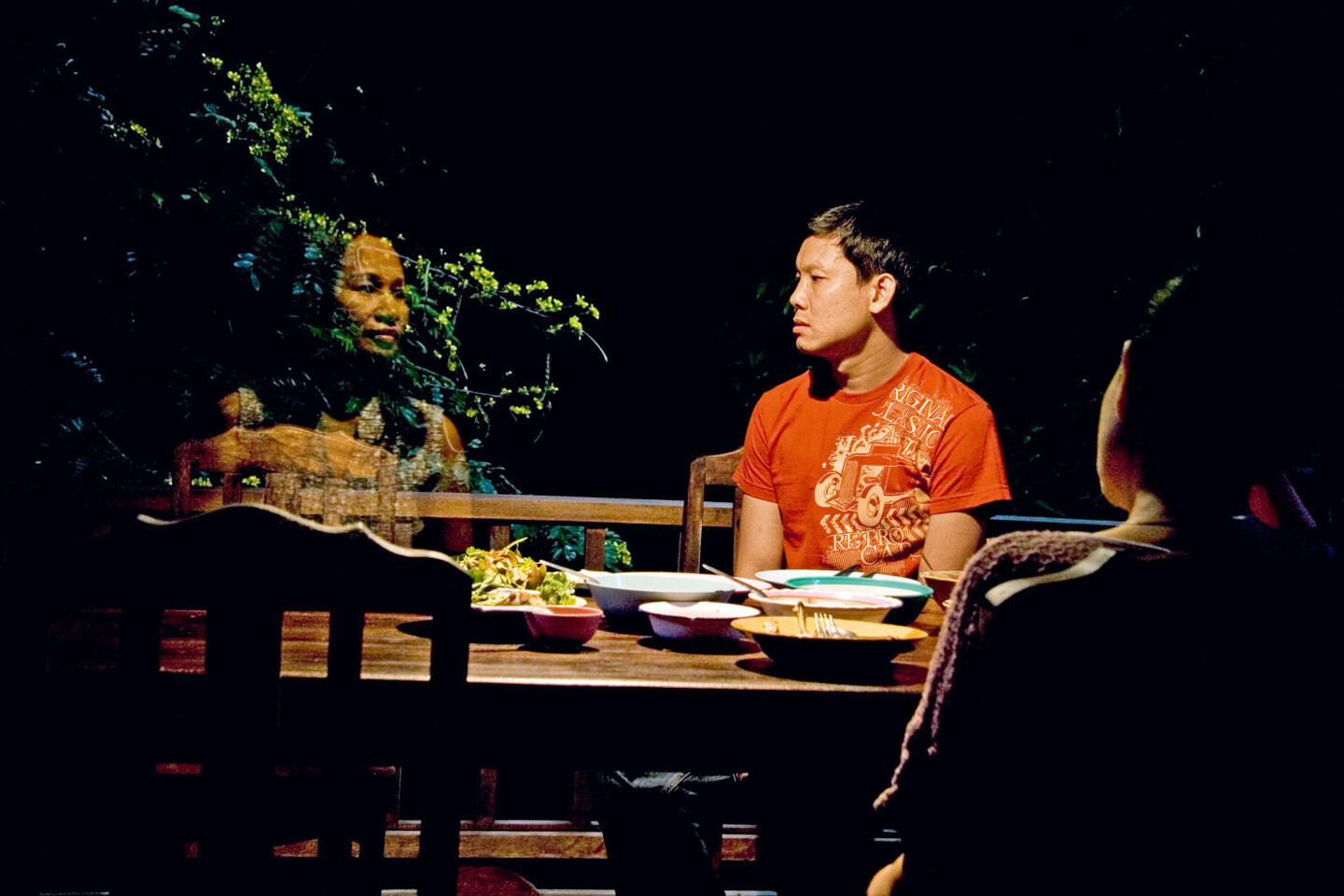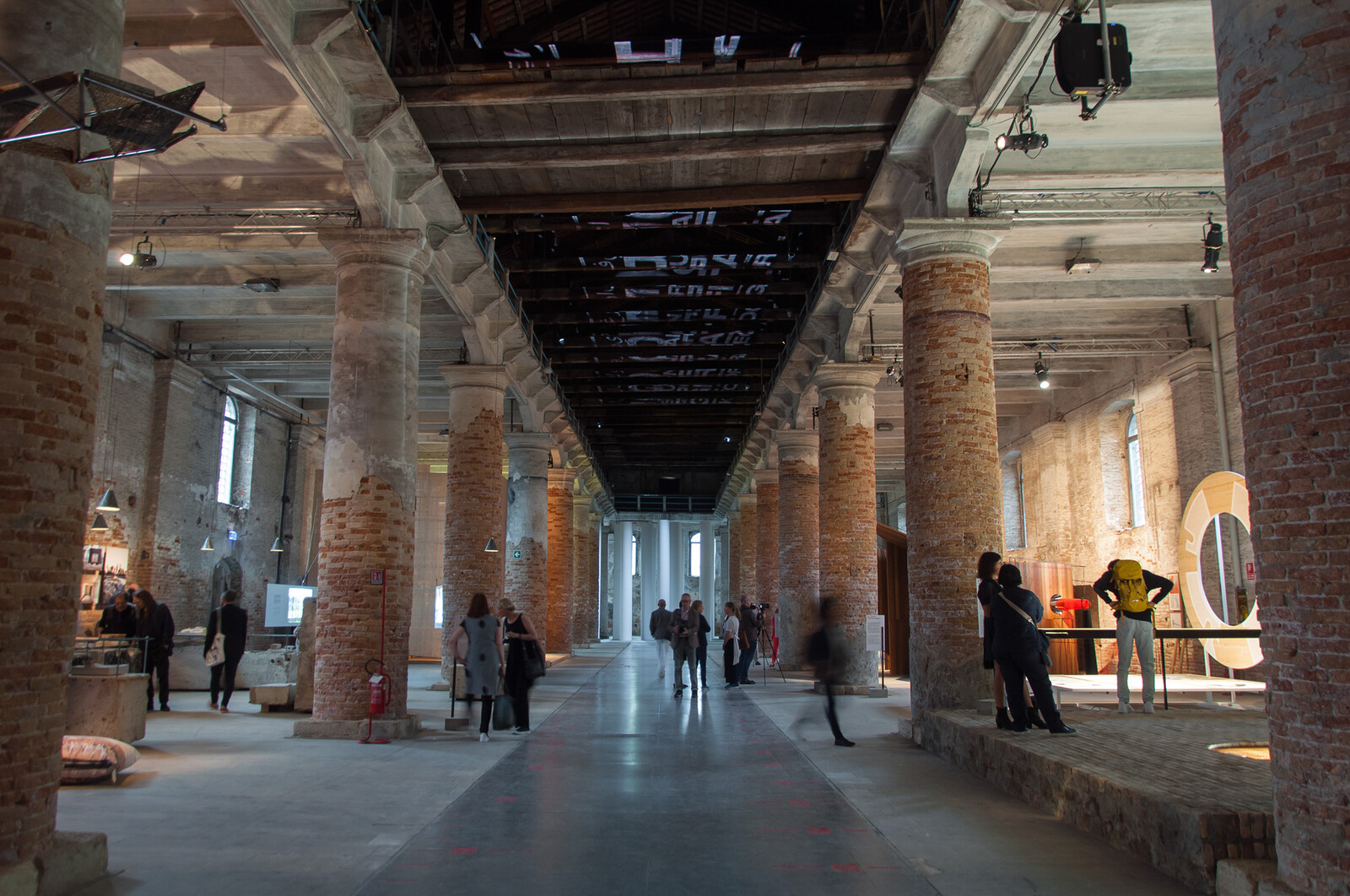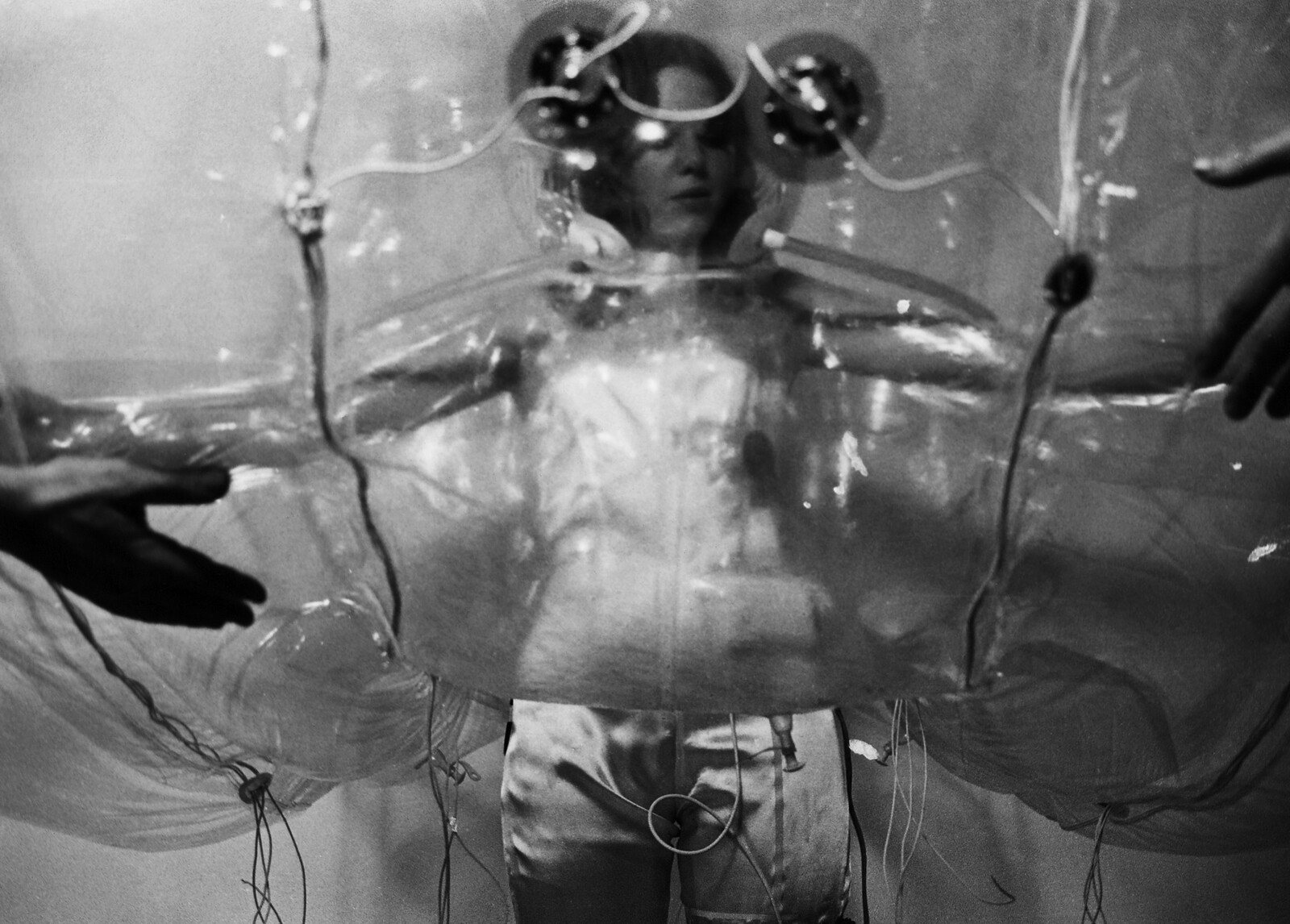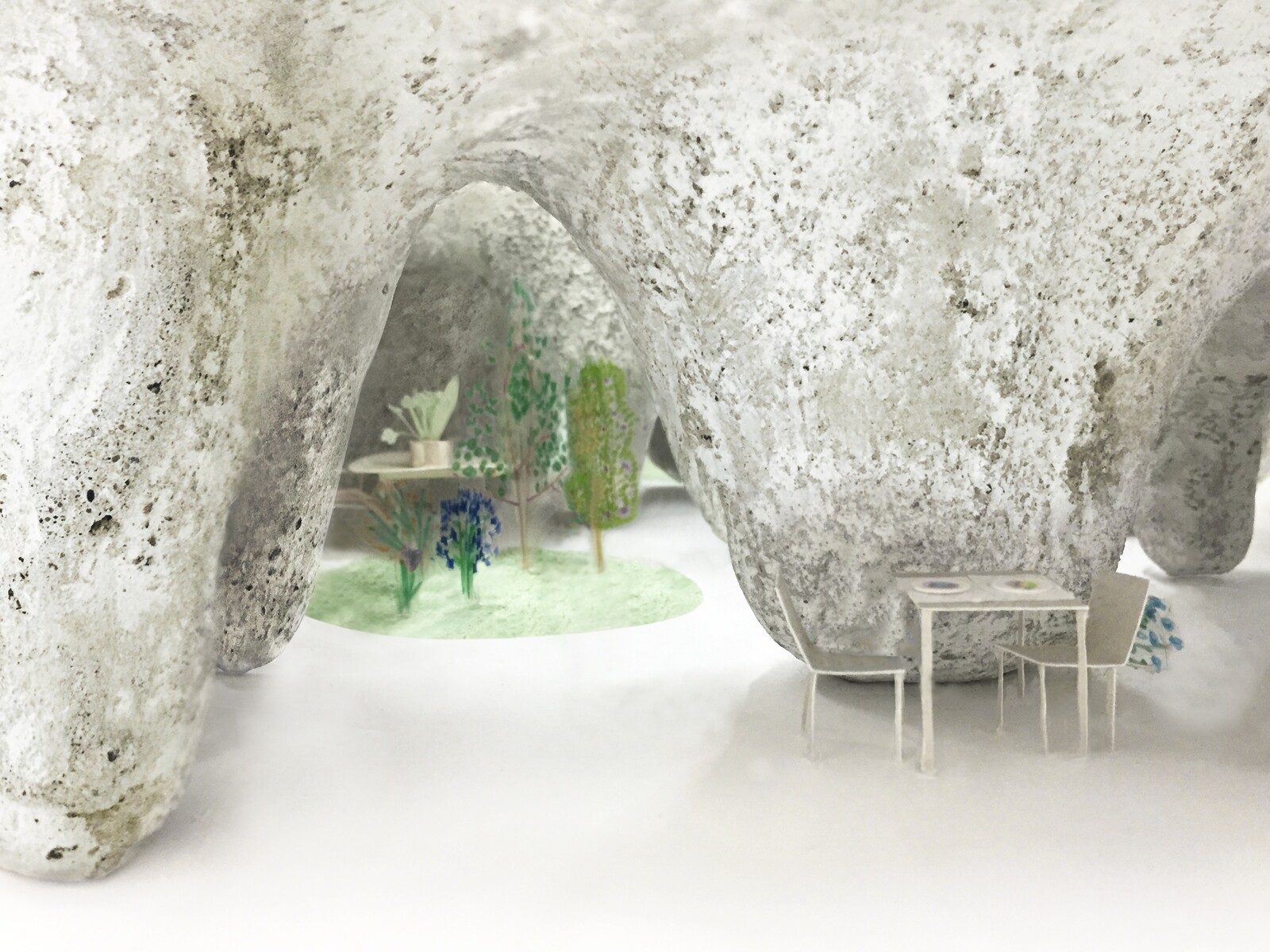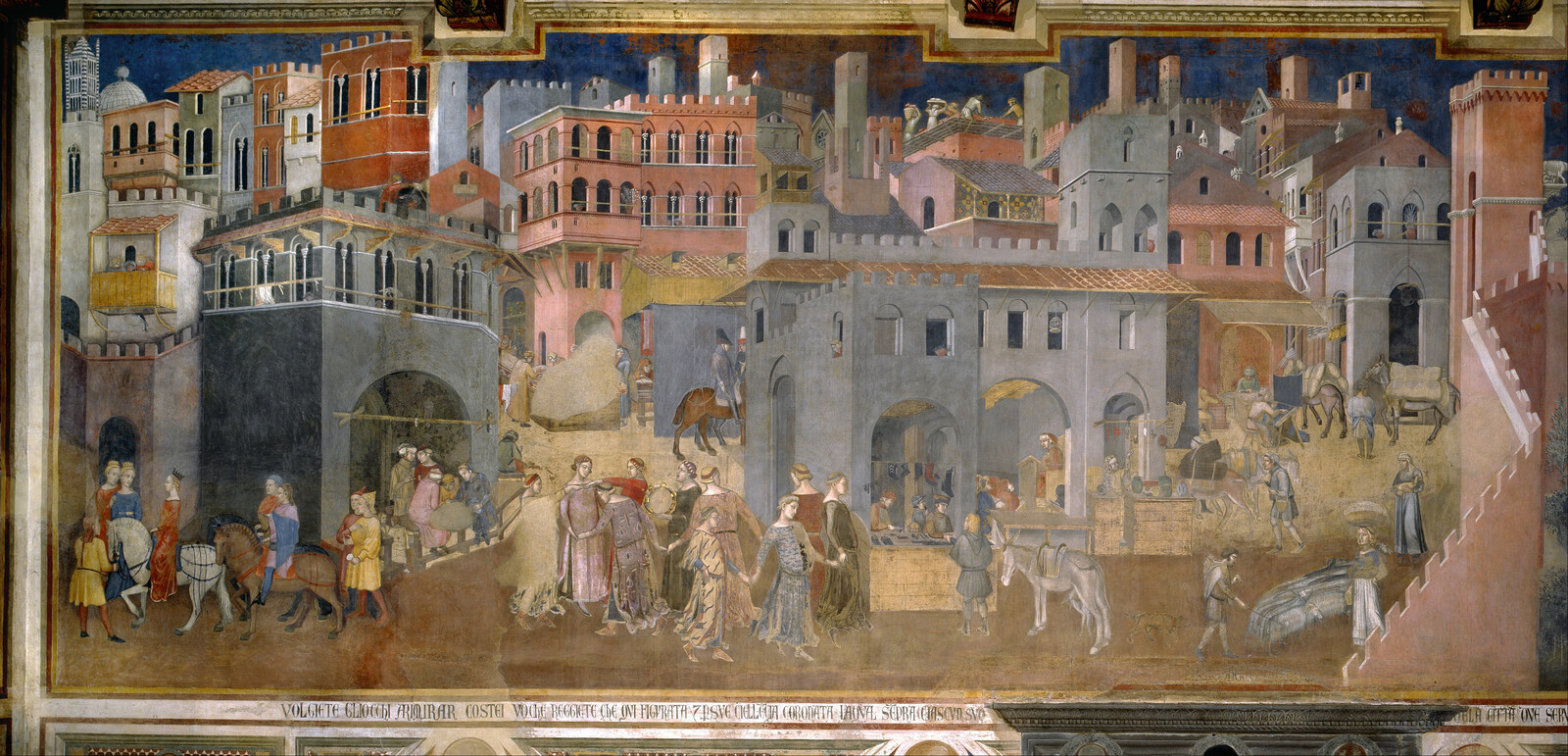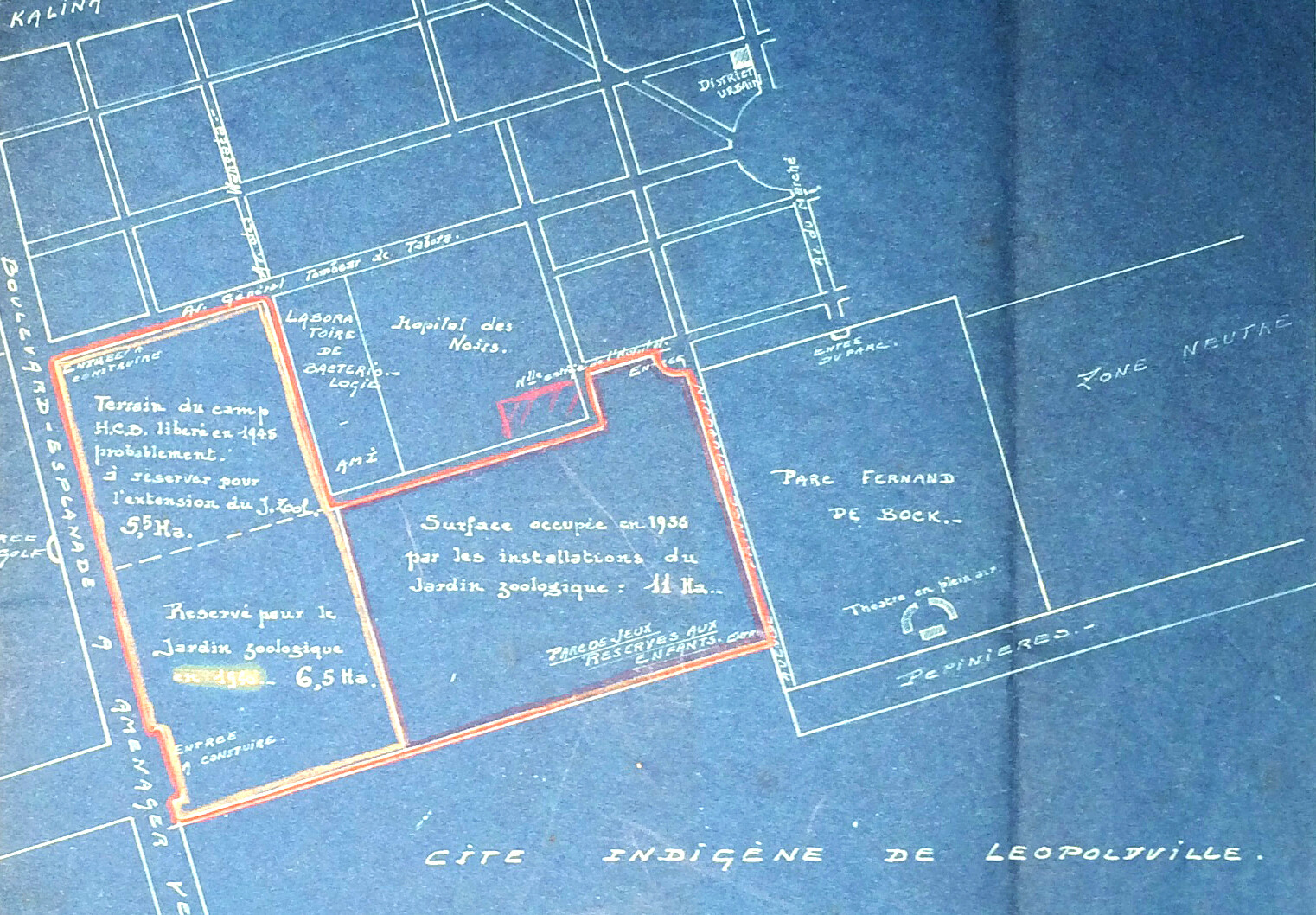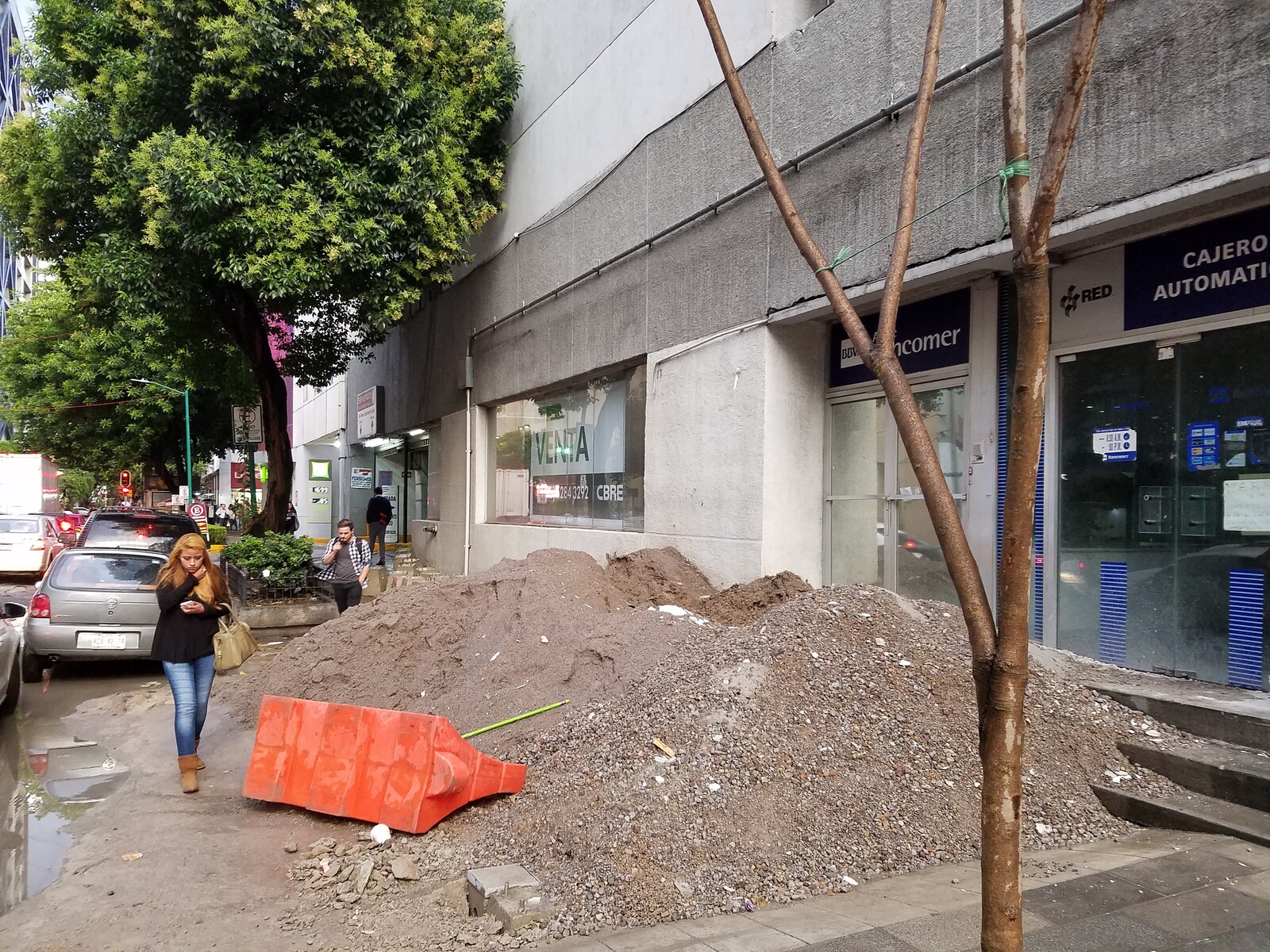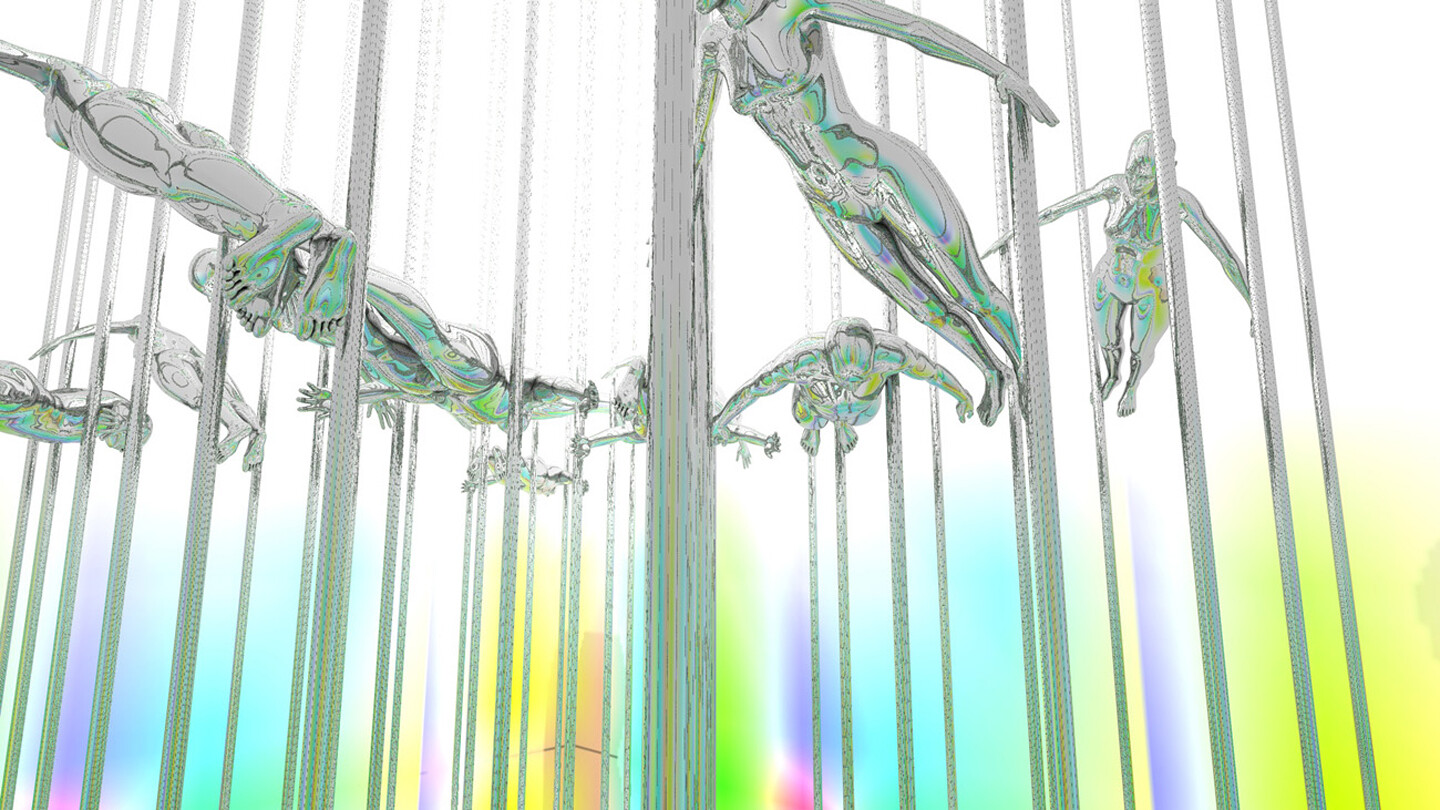“El Caballo” (The Horse), a seven-ton bronze equestrian statue of general Francisco Franco, was removed from Ferrol’s Plaza de España in 2002. Originally erected as a gift from the Spanish city to the dictator in 1967, the monument presided over its main public space for nearly forty-five years. It had endured demonstrations and soft vandalism, yet after being attacked with explosives, the municipal government of Xaime Bello decided to loan the statute to the army, placing it in indefinite custody. On horseback, jailed by a metallic structure, and perched on the back of a truck, the statue of the dictator led an evening parade through the city center. With the background music of Galician bagpipes, applauses, boos, and cries of “assassin!” hundreds of people waked the sculpture to its new location. The event is still recalled as “el paseo,” an eponymous form of execution during the Spanish Civil War by which, under the pretext of a walk, neighbors were murdered in the open and unaware.1
This wasn’t El Caballo’s last journey. First on display and publicly accessible at the open-air courtyard in front of Ferrol’s Navy Museum, it was later moved inside a nearby warehouse and covered by a tarp. When a mighty wind removed the canvas, uncovering the monument, students from the Navy school and neighbors immortalized the event. Images of the bronze sculpture started to circulate in the media, as did allegations against the public display of Francoist symbols. The storm was appeased by means of an architectural solution. In confinement and custody of the Ministry of Defense, the statue of the dictator now stands sheathed by a metallic case inside the military arsenal.2
While in other parts of the world fascist monuments are brought down by citizen’s direct action, in Spain they are subject to periodic burial and unearthing. Since the restoration of democracy and the approval of the Spanish constitution in 1978, the country has attempted to construct an inclusive identity with which all its territories and populations identify; a common cultural heritage that includes and recognizes a large part of the population which suffered political repression for decades.
The ongoing struggle for history in Spain is fought above and below ground. Across the country, archives, storages, and warehouses keep the now-illegal codes of fascism’s victory over democracy away from public scrutiny. Outside, civic associations, together with teams of archeologists, forensic scientists, and volunteers dig in search of the hundreds of thousand unidentified republican victims murdered by Franco’s forces in the killings and summary executions conducted during the civil war and dictatorship. They break the silence of the regime’s appalling violence, epitomized by the bullet holes that remain in cemetery walls, the mass graves to be opened, and fascist monuments left standing.
Deciding which symbols should remain written in the collective memory is a contentious endeavor. The 1977 Amnesty Law, promulgated two years after Franco’s death, prevented the investigation and prosecution of human right violations during his rule. The impunity of Francoist crimes renders the public presence of the monuments that celebrate them even more controversial.


View of the entrance to the basilica at El Valle de los Caídos, Madrid. Photo: Marina Otero Verzier, June 2017.
El Caballo is not the only vestige of the dictatorship that was erased from the urban space in Ferrol. Having been a bastion for the regime as well as Franco’s birthplace, the city has been a disputed field for the display and maintenance of works of art commissioned by and celebrating the dictatorship. The Historical Memory Law of October 2007 marked the removal of a number of Francoist monuments and signs. The aim of the law was to recognize and grant aid to all the victims of the civil war and dictatorship, mobilize support for the tracing, identification, and exhumation of missing persons, and condemn the Francoist regime.3 Yet the right-wing government of the Popular Party (PP), which was ruling at the time, opposed the law and prevented its implementation by not allocating funding for its application. As the Spanish state failed to do so, civil associations, foreign judges, forensic doctors, and even the UN Office of the High Commissioner for Human Rights (OHCHR) led years-long advocacy campaigns for the removal all symbols of Franco’s regime, including his mausoleum, and the exhumation of mass graves of his victims.4 This situation unexpectedly changed some months ago, when the Socialist Party (PSOE) took over in government after a favorable motion of censure. On August 31, 2018, as part of their new policies and political promises, the government of Pedro Sanchez approved a decree that will reform the Historical Memory Law.5 The decree, which has been validated in Congress, provides legal protection to exhume the remains of Franco from the Valle de los Caidos (Valley of the Fallen).
If Ferrol registered the birth of the autocrat, Madrid guards his grave. A monument commissioned by Franco to honor the fallen during the civil war and the site of his own shrine, the Valley of the Fallen occupies a commanding position over the Sierra de Madrid. Strategically and symbolically dominating the territory, the monument overwhelmingly celebrates the victory of fascism over democracy. Built by a workforce that included political prisoners, its walls hide the remains of tens of thousands of victims of the regime, most of which were brought and kept there without the consent of their families.6 Their bodies, according to technical reports by Patrimonio Nacional (the National Heritage Agency), are now part of the architecture that perpetuates their historical repression. Leaks have affected the integrity of the walls, causing parts of the ossuary and the structure of the building to coalesce, making it no longer possible to distinguish one from the other, or imagine their disentanglement.7 Even if the new law allows for Franco’s grave to be exhumed of before the end of the year, the debate leading to the transformation of the site and the afterlife of this convoluted architecture has just started. Meanwhile, without the assistance of leaflets, plaques, or an interpretation center informing about the history and significance of one of the most visited historical sites in Madrid, Franco’s sympathizers keel in front of his tomb as large numbers of tourists continue to immortalize the Valley of the Fallen
The arguments mobilized around the future of this and other Francoist monuments exceeds the polarization of political parties. “Monuments belong to the people,” argues Rosa Mendez, a leftist councilor of cultural heritage of Ferrol.8 Last year, Mendez faced public reprisal for recovering the head of Francoist minister Camilo Alonso Vega from storage and placing it in the courtyard of the cultural center Torrente Ballester. Her decision, she argued, was motivated by the piece’s artistic value.9 “We have to look forward. We are just passing through and our traces and history should be preserved, never destroyed.” Mendez continued, “we can of course hide some of the monuments, leaving the assessment of their artistic value to future generations.”10 The head is now locked inside the so-called “chamber of horrors,” a municipal storage room at the Torrente Ballester. It shares space with a bust and three portraits of Franco that were previously located in city hall, as well as works of public art yet to be restored or put back on display. Outside, memories and bullets from the civil war and the dictatorship are an intrinsic part of the urban and social landscape of Ferrol, from the public school I.E.S. Canido to the San Felipe castle.
Whereas the conversation around Francoist relics and traces has been particularly pregnant in Ferrol and other infamous sites such as the Valley of the Fallen, other Spanish cities also struggle under the scrutiny of the Historical Memory Law to decide the future of their street names, plaques, statues, and buildings.
Unearthing the past
Historical Memory, according to Andreas Huyssen, used to mark the relation of a community or a nation to its past.11 Not anymore though. The past is now bounded to and intrinsically part of the present. Since the sixties, Huyssen points out, a global shift has taken place from repressing the historical past to amplifying memory. Accordingly, the search for alternative historiographies and the reparation to victims of human right violations that resulted from national liberation movements and decolonization processes was followed by an intensification of the debate around the Holocaust in the early eighties. At the same time, new information and communication technologies began to accelerate time and compress space. Huyssen’s hypothesis is that in the wake of an over exposure to and endless circulation of information, there is a tendency towards counteracting the fear of forgetting with strategies of memorization.12 The fear of amnesia, in other words, fosters a memory mania. Huyssen illustrates these endeavors with the proliferation of museums and memorials, primarily in Berlin, and cases of the desaparecidos of Latin America. While he overlooks the comparable situation in Spain, the country with the second-largest number of missing persons after Cambodia, his arguments are instrumental for advancing and shedding light onto the debate around Historical Memory in Spain as well as the future of a great number of architectural works.
Stories conveyed by victims and monuments are found all over the Spanish territory. Not far from Ferrol, the city of Lugo stands as one of the most active in the re-signification of spaces connected to political repression inflicted by the regime. Its former jail for political prisoners has been transformed into the cultural center O Vello Cárcere, which hosts exhibitions and events dedicated to the victims, and that celebrates those democratic values and ideals overthrown by the dictatorship. The country’s capital, Madrid, despite the municipal policies aimed at applying the Historical Memory Law, still displays a large number of street names, monuments, and buildings commemorating the victory of fascist forces and the violent repression that followed. A warehouse in Barcelona’s Via Favència, which accumulates Francoist vestiges removed from the urban space including an equestrian statue of the dictator, is often referred to as the “dustbin of Francoism.” As with the one in Ferrol, the bronze statue had roamed the city and reveals the scars of the journey. Originally placed in the castle of Montjuïc in 1963, with the arrival of democracy it became an object of vandalism until it was hidden inside a room of the Military Museum. The logistical operation of moving it demanded the amputation of the dictator’s left leg, which apparently didn’t fit through the door. Since March 2008, the leg and statue have been kept in the warehouse in Favència de Canyelles, where it was mysteriously found beheaded in 2013, with no traces from either perpetrator or head.13 Last year, a temporary exhibition in El Born, entitled “Franco, Victòria, República: Impunitat i espai urbà” (“Franco, Victory, Republic: Impunity and urban space”), put the equestrian statue back on public display outside of the old market.14 Protests instigated by the street presence of Francoist symbols escalated in a series of assaults, resulting in the devastation of the statue. Its remains were, once more, retired into a warehouse.15 Other retired statues of Franco are also kept in municipal and military storages in Madrid, Santander, and Valencia. Some are maintained by provincial museums, such as the one in Zaragoza, or on display in private institutions, as it is the case of Melilla.16 Upon being withdrawn from the streets, many of the sculptures have been greeted by hundreds of people giving the Fascist salute and to the cry of “Viva Franco.”17
Each region of the Spanish territory reflects the particular character of the imprint of the Francoist regime—from the front lines to sites of repression and cleansing—as well as the current political debate surrounding their memory. Endeavors towards the resignification and removal of monuments are usually part of larger social demands and leftist political municipal programs, including those by the cities of Barcelona and Madrid that involve an increase in stock of social-rented and other affordable housing options and a fight against evictions as well as aggressive speculation on urban development. The dismantling of Francoists monuments goes, many times, hand in hand with that of the legacy of his social and political architecture. Similarly, these actions subvert the understanding of architecture as an asset from which to profit, and cultivate an ethos that aims for reparations for the violence and inequality imposed by the regime and its aftermath, including the neoliberal transformation of the Spanish political economy. In doing so, I would argue, its victims and their ideals can be best remembered.


Site of mass graves yet to be opened in the cemetery of Sarria (Lugo). Photo: Guillem Valle, August 2017.
Yet in order to construct an alternative architecture, the country needs to inspect its foundations. As storages are filled with symbols from the dictatorship, veiled and removed from public space, mass graves yet to be opened are traced by associations. The government in Andalucía, for instance, is working on a report to initiate the exhumation of mass graves in different cities which hold an estimated 12,000 bodies. Mallorca, arguably the forerunner in the advocacy and legislation on Historical Memory, has approved the “Commission of missing persons,” a law that applies to the Spanish civil war and dictatorship, and a Democratic Memory Law.18 Under the scope of these laws and the Commission, several exhumations were carried out across the Majorcan territory, including the mass grave in the cemetery of Porreres. A few meters away, in the oratory of Santa Creu, the Associació Memòria de Mallorca has erected a memorial to prisoners from more than thirty villages who were executed. Bullet holes left in the entrance of the church register the crimes. From the oratory, the bodies were thrown into a mass grave inside the cemetery and buried in quicklime. All cases of forced disappearance, there are no registries or court cases. Oral testimonies made it possible to locate the grave, hidden under a columbarium. At less than one meter deep, the team of forensic anthropologists lead by Francisco Etxeberría found the first body.19
By unearthing the past there is the expectation of crafting a new present, one honoring those who were forcefully silenced. Their bodies are treated as monuments to the ideas they defended. “It is important that this debate happens not only in the streets, but in the courts,” argues M. Antònia Oliver and Tonina Mercadal, president and secretary of the Associació Memòria de Mallorca. Or, as Huyssen would put it: memory can be no substitute for justice.20 “Spanish judges do not go to the exhumations.” Oliver and Mercadal continue: “they argue that the crimes have prescribed, and some of them even denounce the processes carried out by the associations. It is necessary to declare the illegality of the jurisprudence that emanates from the regime and the coup perpetrators. Sentences have to be declared invalid. And monuments have to be dismantled.”21 Their demands, however, are not met without struggle.
In 2017, Palma’s municipal government initiated the process for bringing down the Sa Feixina monument. The piece was originally designed as a tribute to the fascist forces deployed on the heavy cruiser Baleares and erected in a prominent location in the town. Since 1978, the year that the Spanish Constitution was approved, the site has been the target of demonstrations by citizen movements. In 2010, in an attempt to apply the Historical Memory Law, some of the monument’s inscriptions and symbols directly associated with the Francoist regime were removed. Yet, the measure failed in mitigating the political debate. “To keep these monuments is to perpetuate impunity of Francoist crimes,” argues Oliver and Mercadal.22 Their thesis is shared by the local government which, following the decision by the Commission of Historical Heritage of the Consell de Mallorca to not declare Sa Feixina as a heritage-listed asset, voted for its demolition. The resolution, which at the time of writing is still pending and facing opposition, was supported by four reports presented to the councilors of Culture, Heritage, Historical Memory, and Linguistic Politics of Palma. One of them, signed by architect and scholar Josep Quetglas, offers a conceptual framework for disputing the logics generally applied to justify the patrimonial value of fascist monuments.23 The architect’s report, a reference and asset for future debates in Mallorca, Madrid, and elsewhere, provides a response to the arguments by professionals and institutions in defense of the cultural, formal, and artistic values of the monuments, and the ideological positions that are usually mobilized in similar national and international cases.
In the monument we are not in the presence of any work of art—if by artwork we understand a human work, done at any time, that shows human values and dignity in aesthetic perception.
The monument has no artistic value. Aesthetic pleasure should not supersede human dignity. There is only one way to give the monument an aesthetic dimension, that is to turn its dismantling into a work of art.
The monument does not show any cultural value, if by culture we understand what manifests and stimulates the human values of a social group.
The monument has no architectural value. In fact, for not having interior space, it cannot be considered architecture.
The monument has no civic value. There is only one way to value it from the civil point of view, that is to turn its dismantling into a gesture of education, a collective moment for the construction of civic responsibility.
The monument has no patrimonial value, if by heritage we understand everything which citizens take and feel as their own assets, and will keep to future generations, in memory of those who are no longer there, and of ourselves.
The value of the work cannot be replaced by the value of its “style.” The works, in themselves, do not have any “style.” “Style” is the label that is placed on the work by those who cannot say anything else. Nevertheless, a “style” is not ideologically neutral.
The monument is not neutral, for it would mean that it is devoid of all meaning.
If is still possible to explain the original aims of the monument, and if it has a meaning that stays in the memory of the citizens, then the work still preserves and delivers all its ideology.
A symbol, like any sign, is always an agreed arbitrary construction. A modification doesn’t re-signify or erase the meaning of a monument. The crimes it celebrates are embodied in it, not only in some of its components.
The past cannot be changed. Every product of the past is already a document about the time and society that produced it. What can be changed, and it is changed endlessly, is history, that is to say the narration of the past.24
The involvement of architects in the discussion around Francoist monuments in Spain sheds light into the ways in which the discipline plays a part in the process, from the design and erection of memorials to the assessment of their removal and, more importantly, the design of an architecture that honors those who stand up against fascist forms of living. In this debate Quetglas becomes a reference, as his work deals with the dismantling of monuments as much as the restoration of the memory of the victims. Memory is a recurring theme in Quetglas’ architectural books, probably being the most prominent exponent Fear of Glass, where he examines the life and afterlives of Mies van der Rohe’s Barcelona Pavilion, as well the silence that emanates from it which, according to Quetglas, anticipated the rise of the Nazi regime in Germany. Having invested his career in publishing works of architectural theory and criticism, his turn to building practice was in the form of the burial site and memorial for the victims of fascism—inevitably evoking what Adolf Loos would famously claimed in his essay “Architecture” from 1910, that the grave is a primordial form of architecture.

Memorial to the Republicans, erected in 1977, re-opened in November 2012 according to a project by Tomàs Bosch, Jaume Mayol, and Josep Quetglas. Photo: Marina Otero Verzier, August 2017.
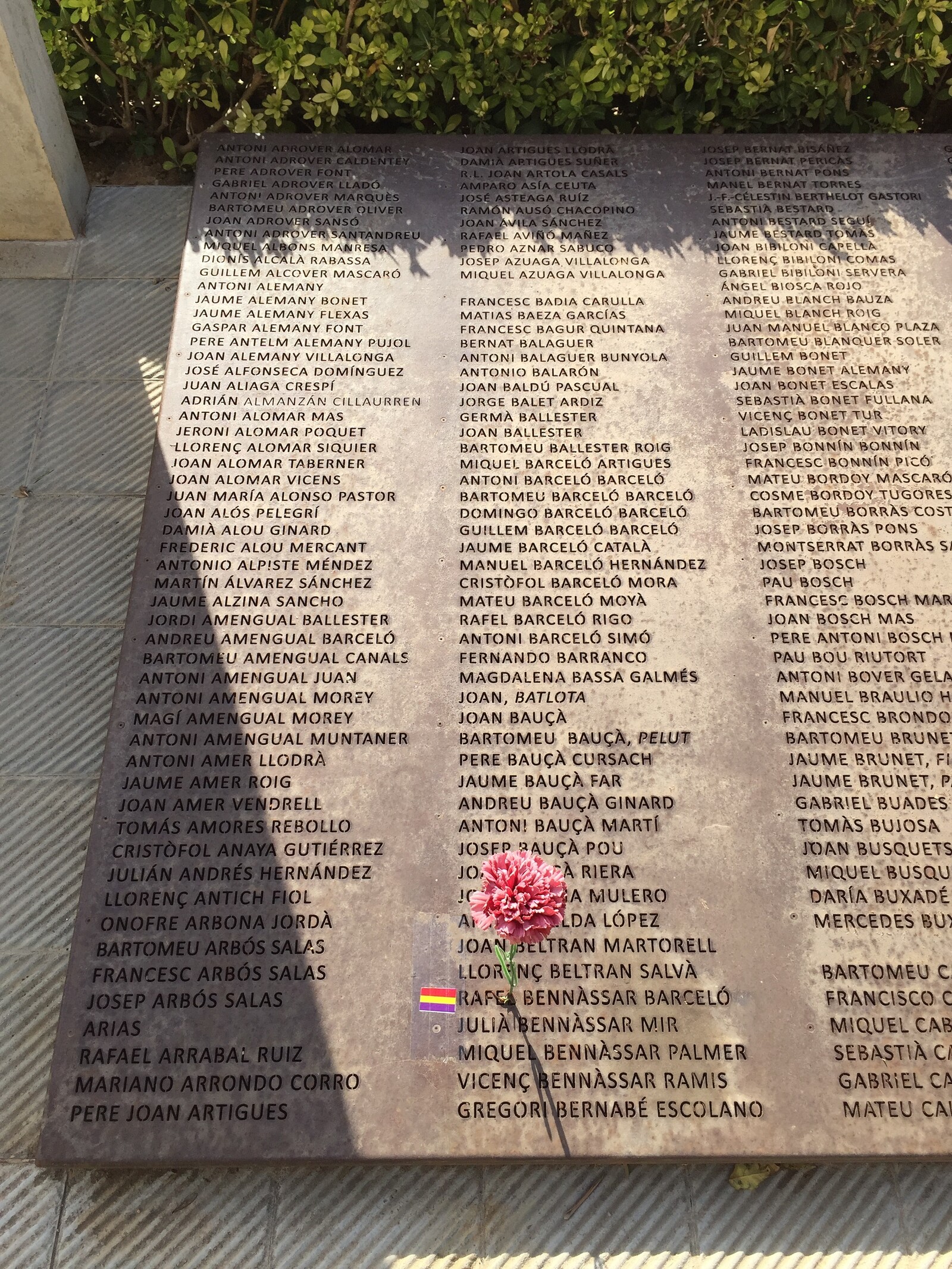
Mur de la Memòria in Palma’s city cemetery, built to honor the republicans murdered by fascist forces in Mallorca, with work by Tomàs Bosch, Francisco Cifuentes, Jaume Mayol, Josep Quetglas, and a text by Llorenç y Margalida Capellà. The memorial includes, engraved in metal plates, the names of more than 1500 victims. Photo: Marina Otero Verzier, August 2017.
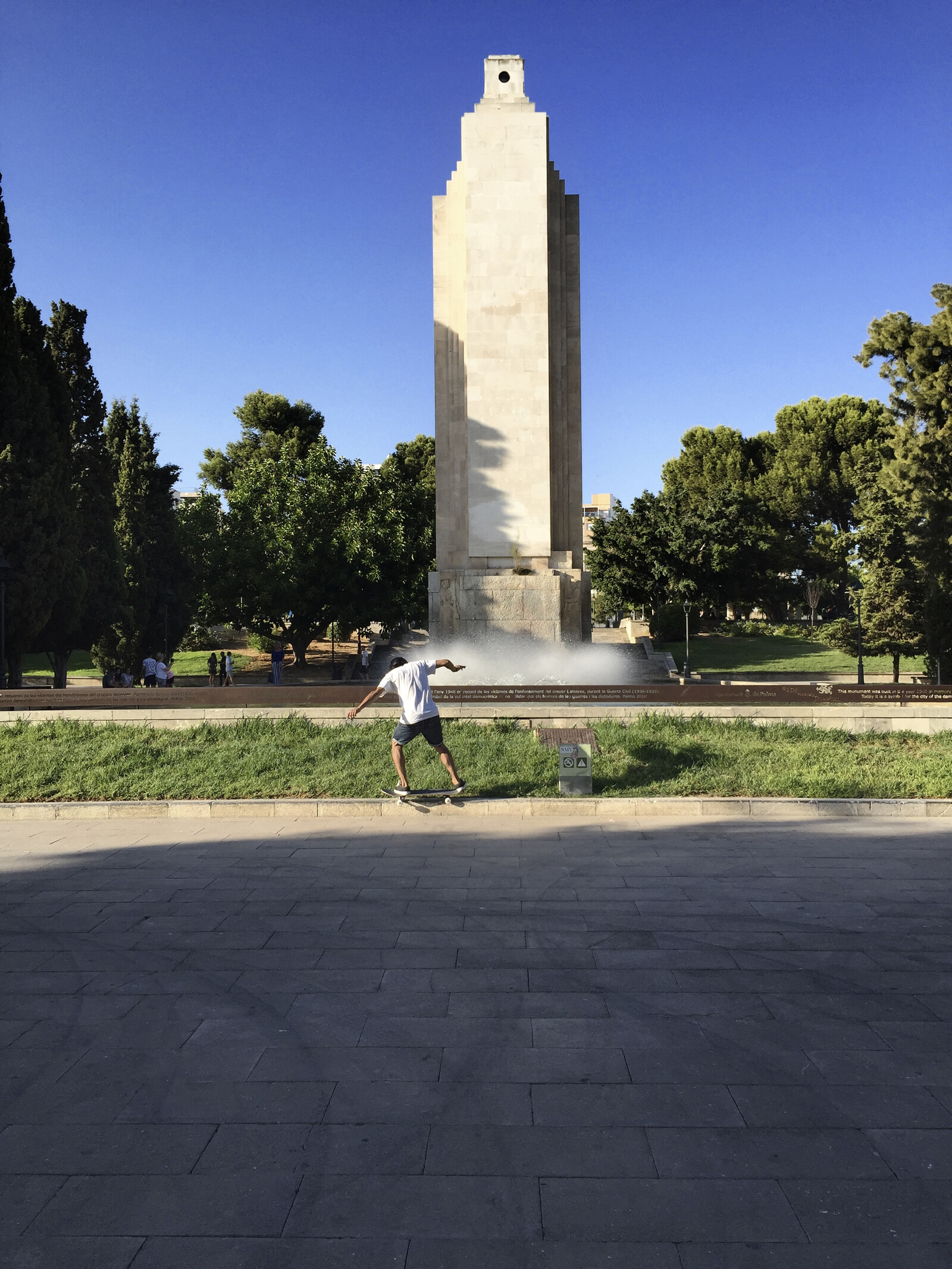
Sa Feixina monument in Palma de Mallorca. Photo: Marina Otero Verzier, August 2017.
Memorial to the Republicans, erected in 1977, re-opened in November 2012 according to a project by Tomàs Bosch, Jaume Mayol, and Josep Quetglas. Photo: Marina Otero Verzier, August 2017.
In a journey with Quetglas through the villages and countryside of Mallorca, the island unveils a territory unlike that which exists in its touristic imaginary; its history an ongoing process of creation, destruction and re-signification. Together with Tomàs Bosch, Francisco Cifuentes, and Jaume Mayol, Quetglas built the Mur de la Memòria in Palma’s Ciutat cemetery. Built to honor of the republicans murdered in Mallorca, the memorial includes engraved in metal plates, the names of more than 1,500 victims, and a text by Llorenç y Margalida Capellà: “Time stands still and reminds men and women who died in defense of freedom.” Thirty kilometers from Palma, the Memorial to the Republicans stands in the Montuïri cemetery. Designed by Quetglas, Bosch, and Mayol, the memorial consists of a vertical gravestone and twenty two ceramic tiles placed in the ground and engraved with the names of the victims by the hands of their current relatives. “The monument is not delivered, it is made by the people, by the families,” the architects explain.25 The gravestone was attacked and destroyed soon after its opening in 2012, to be later rebuilt in concrete.
If architecture is mobilized in the collective reparation for republican victims, Quetglas finds the clue for the re-signification of Francoist symbols in art. He imagines the demolition of Sa Feixina as an artistic endeavor, one that could be commissioned to “Bill Viola or Alexander Kluge.”26 According to his proposal, fascist monuments should not be kept for posterity, but rather destroyed by a direct, collective action; a public celebration to bring down the hated symbols, and against the repression that was systematically imposed by the regime on a large part of the Spanish population.
The transitory, the ephemeral, and the popular event as contemporary constructions of public memory in place of the monuments brings this ongoing story back to Huyssen. In his thesis, the monumental has migrated from the real into the image, from the material into the immaterial. Tied to nineteenth-century kitsch and to mass culture, representative of nineteenth-century nationalisms and of twentieth-century totalitarianisms, privileging mode of expression of mass politics, and attempting to overwhelm the individual spectator and tied to narcissistic delusions of grandeur, the monumental is aesthetically, politically, socially, ethically, and psychoanalytically suspect. For Huyssen, monumentality can do without permanence—that is, by taking the form of a cultural event to be circulated and memorialized by the media—but unlike Quetglas, also without destruction.27
In spite of the evanescent, transitory present, the bodies and belongings found in mass graves across Spain are unearthed as archaeologists unbury monuments from the past and vestiges that force the rewriting of history. Silenced over decades, their stories take a material dimension and, visualizing the unequal recognition of part of its population, shatter the grounds of the country and its memory. Simultaneously, the vestiges of Francoists monuments, now largely in confinement, continue to circulate in media. Captured while standing, being removed, or destroyed, their images create new memories as much as perpetuate their presence and legacy.


El Caballo, the equestrian statue of general Francisco Franco, in custody of the Ministry of Defense, sheathed by a metallic case inside the Navy’s military arsenal in Ferrol. Photo: Spanish Ministry of Defense.
National specters, communal imaginations
In the military arsenal of Ferrol, the statue of the dictator resists the passing of time. For its veiling, I would argue, makes it visible, restoring it to public debate; uncannily, as a ghost. Certainly, transmitting the fascist spirit to posterity was the aim of the architecture of the Third Reich, best represented by Albert Speer’s ruin theory of architecture; an imperialist project for the conquering of time and space.28 It was also Franco’s intention in building the Valley of the Fallen. “The dimension of our Crusade, the heroic sacrifices involved in the victory, and the far-reaching significance that this epic has had for the future of Spain,” Franco stated in 1940, “cannot be perpetuated with the simple monuments with which the outstanding events of our history and the glorious deeds of her sons are often commemorated in towns and villages. The stones that are to be erected must have the grandeur of the monuments of old, which defy time and oblivion.”29
In this context, the fight against the specter of fascism demands a renewed relation between remembering and forgetting. While it is imperative to mobilize resources for the recognition of and reparation to all the victims of the civil war and dictatorship and their families, as well as for the tracing, identification, and exhumation of mass graves, their honoring still demands architecture: one that celebrates the ideas they supported and their capacity to unleash other, possible non-fascist futures. And that might be achieved neither by an archetypal monument nor one’s devastation.
In addition to the mass grave and the court, the demolition of monuments, and the erection of memorials, there are other battlegrounds in which architecture has a prominent role. For the lasting architectural traces of the violence and repression inflicted by the regime on part of the population are imbricated in the country’s social, political, religious, and economic structures; in gender roles, models of home, family, belonging, and ownership promoted during the dictatorship through its Falangist, Catholic, and nationalist culture; and of course in architectural practices and thought, being one of the most potent vehicles for ideological dissemination.30
Democracy restored and actualized some of the social advancements introduced by the Spanish Second Republic that Franco’s rule had removed. Despite advances in and legislation of divorce (1932, 1981), same sex marriage (2005) and abortion (1937, 1985, 2010), the ideology promoted by Franco materialized and gave shape to housing policies and logics of urban development that transformed the Spanish territory, as well as processes of unequal capital accumulation. Inequalities that are still visible today were facilitated by the appropriations, requalification of land, and forced expropriations during the civil war and the dictatorship. The regime, as registered in their inventories, elaborated a system that would classify the population according to their political affiliations and sympathies, dictating who were “enemies” and thus subject to the seizure of their belongings and their lives.31 Families would see how their relatives would be executed, and their properties confiscated. The state-sponsored mass murder and plundering of rights and private and public assets inflated the patrimony of Franco and his supporters, and its impact is still visible today. As mass graves are still to be opened, properties were never given back to their owners.
The memory of those who lost their lives in defense of democracy, social progress, and equal political and civil rights; those who deprived the nobility of special privileges, established the freedom of speech and association, defended the public education and emancipation of women, and introduced women’s suffrage, is to be found not only in monuments but primarily in accessible, inclusive, affordable architecture with civic, cultural, and aesthetic value. This is where the ideals of those who sacrificed their life for a democratic culture speak in contemporary terms.
Memory, I argue, is a tool to imagine and unleash strategies for subverting the fascist policies and their aftermath that are still imbricated in the social, political, and urban environment, logics of architectural practice, and unequal capitalist accumulation. If we succeed in such subversions, for which so many Spanish civic associations and movements, municipal policies and, hopefully, the new central government advocate, the presence of fascist monuments’ ruins might one day be rendered insignificant.
See ➝.
Information provided by the Spanish Ministry of Defense and the Arsenal of Ferrol.
Historical Memory Law in Spain (Law 52/2007 December 26, 2007), Ministry of Justice, ➝. Translated by the author.
“España / Memoria histórica: La fortaleza de la democracia se mide en la capacidad de atender los reclamos de las víctimas,” Office of the High Commissioner for Human Rights (OHCHR), May 19, 2017, ➝. Translated by the author.
“El Gobierno inicia el procedimiento para exhumar a Francisco Franco del Valle de los Caídos,” El País, August 31, 2018, ➝.
See Marina Otero Verzier, “Silent Walls. The Architecture of Historical Memory in Spain,” Ed 1, 2017, 109-114.
Luis Gómez, “La mayor fosa común de España,” El País, September 21, 2008, ➝.
Rosa Mendez, conversation with the author in Ferrol on August 9, 2017.
Rosa Mendez, conversation with the author in Ferrol on August 9, 2017. The incident was also published in the local newspapers: Pita Parada, Rocío, “Polémico traslado al Torrente del busto del franquista Alonso Vega,” La Voz de Galicia, February 4, 2016, ➝.
Rosa Mendez, conversation with the author in Ferrol on August 9, 2017.
See Andreas Huyssen, Present Pasts: Urban Palimpsests and the Politics of Memory (Stanford: Stanford University Press, 2003).
Ibid., 18.
Ramón Suñé, “Reliquias franquistas en un almacén,” La Vanguardia, May 1, 2012, ➝.
Meritxell M. Pauné, Quico Sallés, “Una exposición en el Born rescatará de los almacenes dos estatuas simbólicas del franquismo (Born Centre de Cultura i Memòria),” La Vanguardia, August 2, 2016, ➝.
Alfonso Congostrina, “Derribada la estatua de Franco colocada en el Born de Barcelona,” El País, October 21, 2016, ➝.
See ➝.
Information provided by M. Antònia Oliver and Tonina Mercadal from the Associació Memòria de Mallorca, Palma de Mallorca, August 25, 2017.
Huyssen, Present Pasts, 28.
M. Antònia Oliver and Tonina Mercadal in conversation with the author in Palma de Mallorca, August 25, 2017.
Ibid.
Josep Quetglas Riusech, “Informe sobre la presència de valors formals, culturals o artístics en les restes del monument ‘Mallorca a los Héroes del Crucero Baleares,” July 10, 2017, ➝.
These paragraphs are a summary by the author of Quetglas’s report.
Josep Quetglas in conversation with the author in Mallorca, August 25, 2017.
Quetglas Riusech, “Informe.”
Huyssen, Present Pasts.
Ibid.
“Bulletin nº 93,” Boletin Official del Estato, April 2, 1940, ➝. Translated by the author.
I refer here to the role that the discipline of architecture played in the survival of Franco’s dictatorship, and in particular to María González Pendás, Architecture, Technocracy, and Silence: Building Discourse in Franquista Spain (PhD Diss, Columbia University, 2016). For her analysis on the legacies of the regime in contemporary politics and culture, see “Introduction,” pp. 31–39.
Danilo Albin, “Lo que la dictadura robó y la democracia nunca devolvió: así se planificó el expolio franquista,” Público, July 29, 2017, ➝.
Positions is an independent initiative of e-flux Architecture.
This essay is part of the long-term project on the debate surrounding the historical memory in Spain, developed together with photographer and filmmaker Guillem Valle.
Positions in an initative of e-flux Architecture.
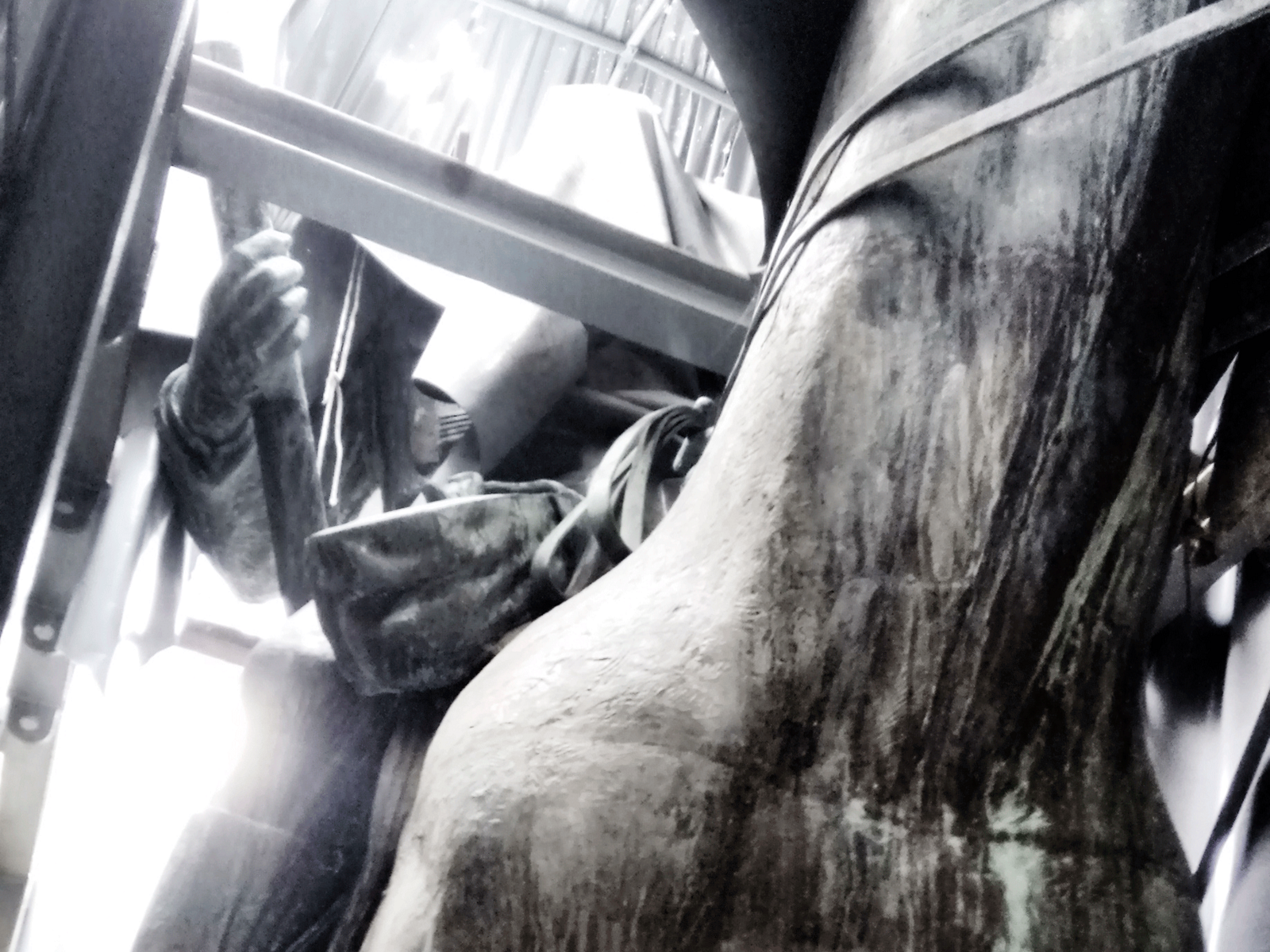


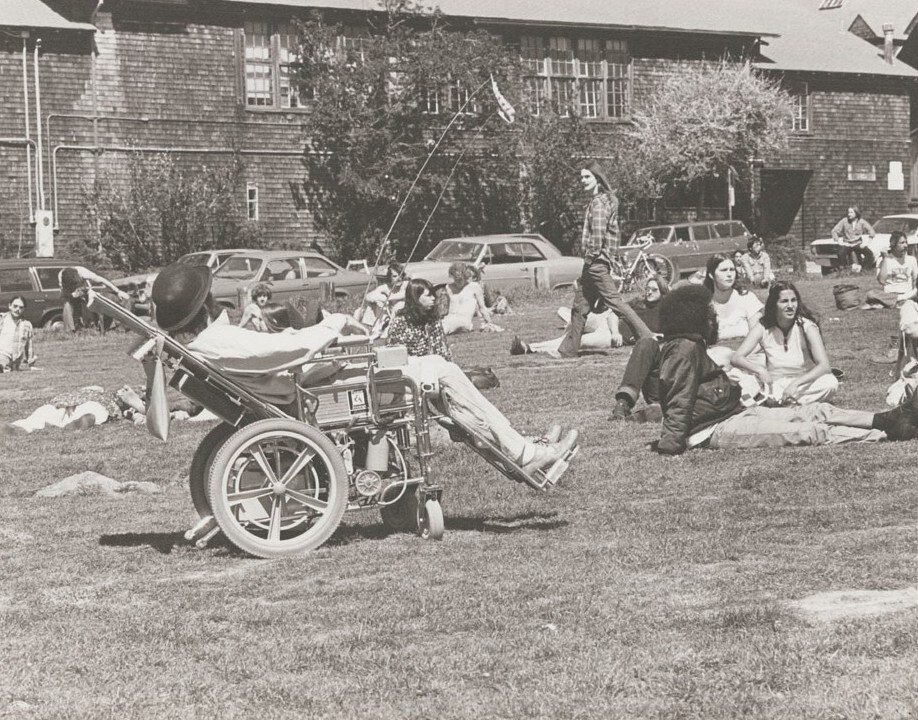
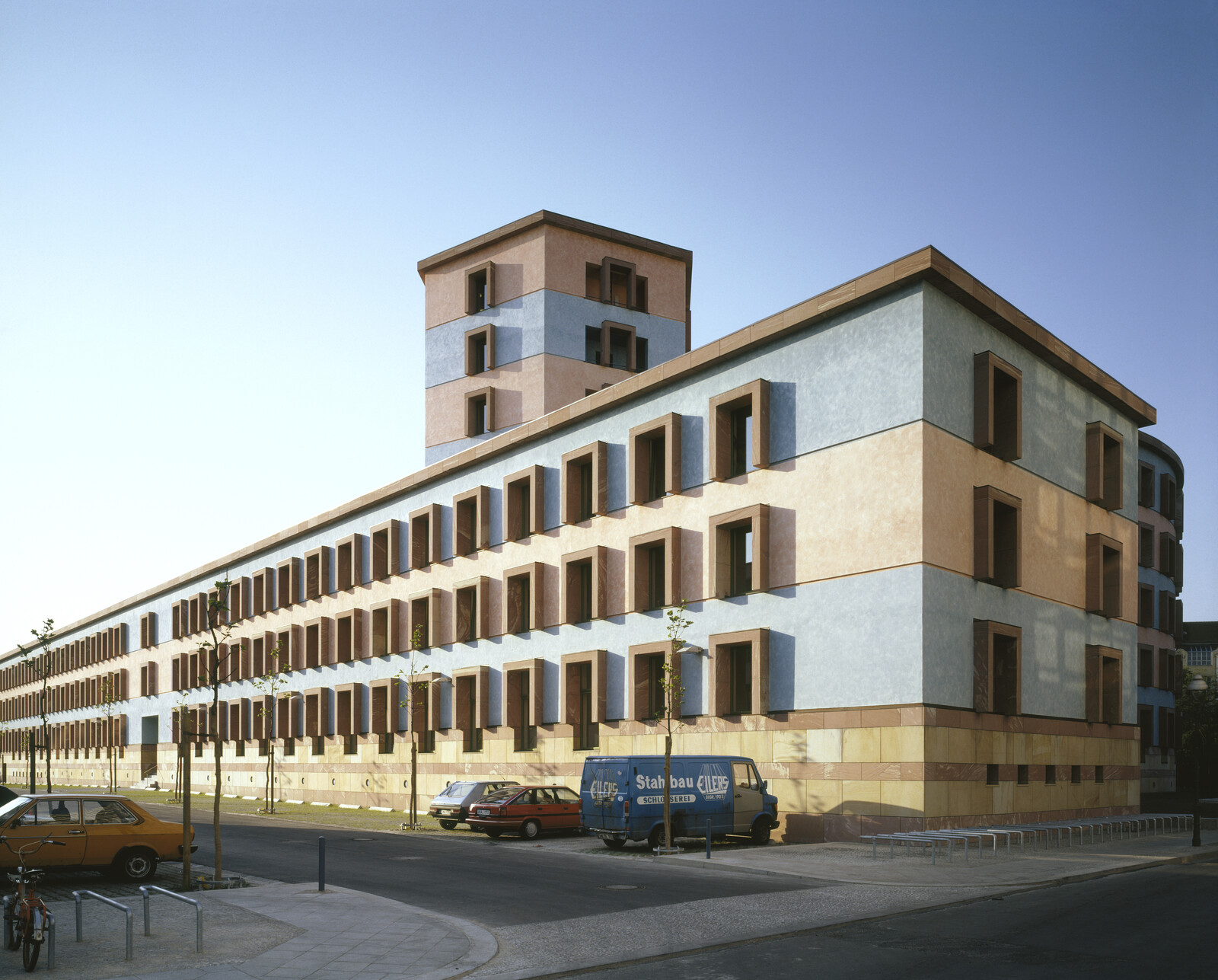
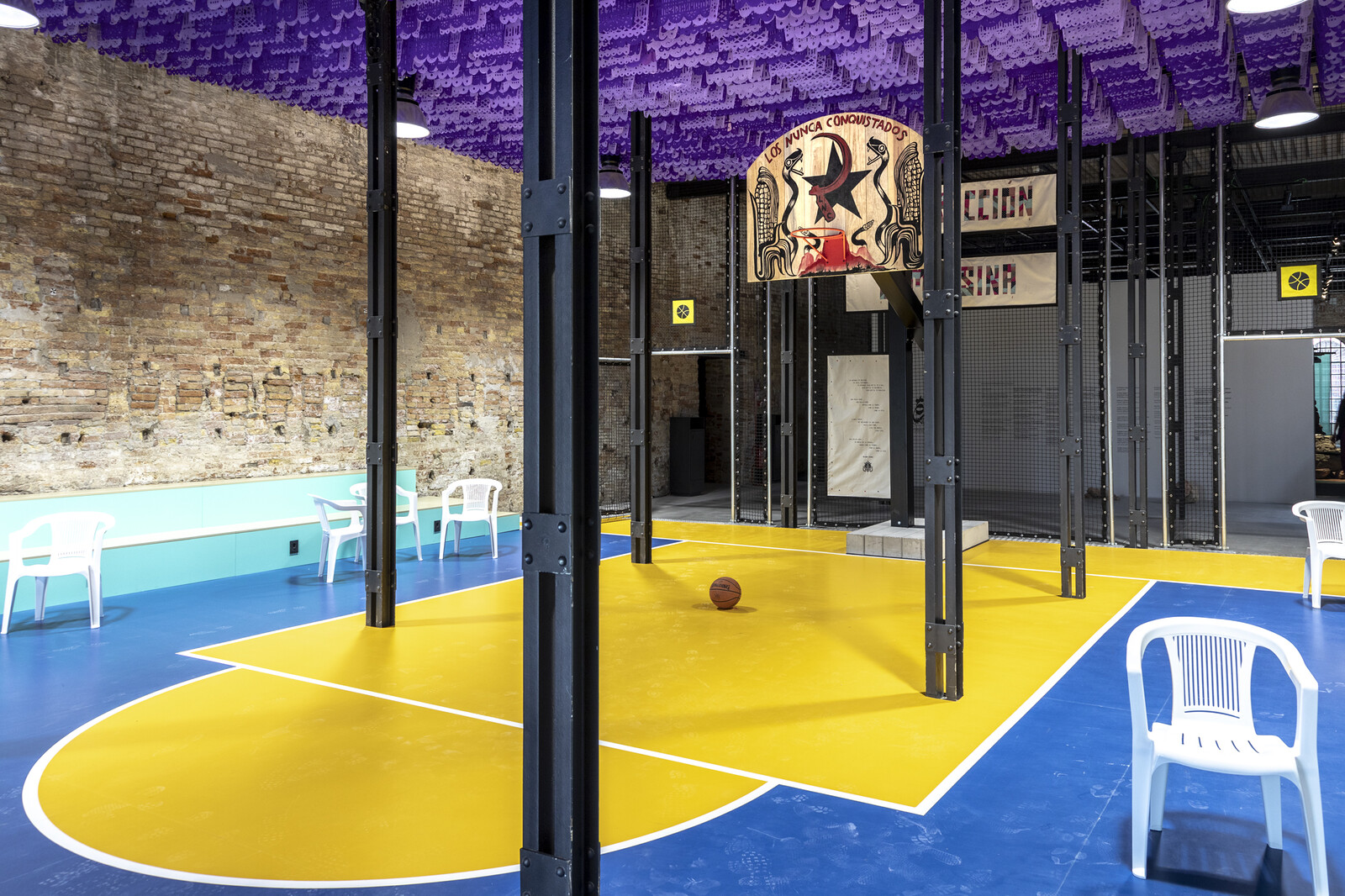
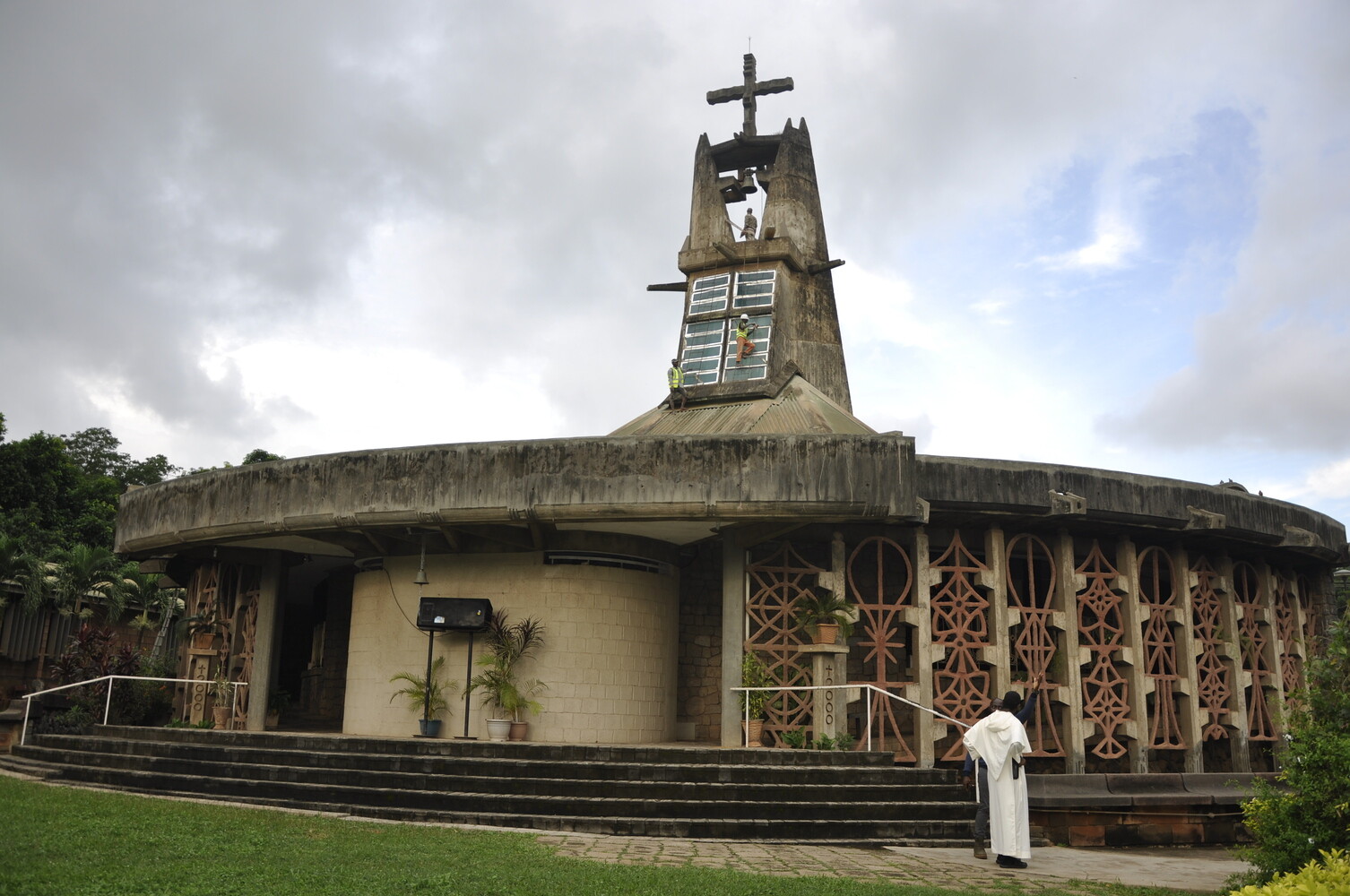
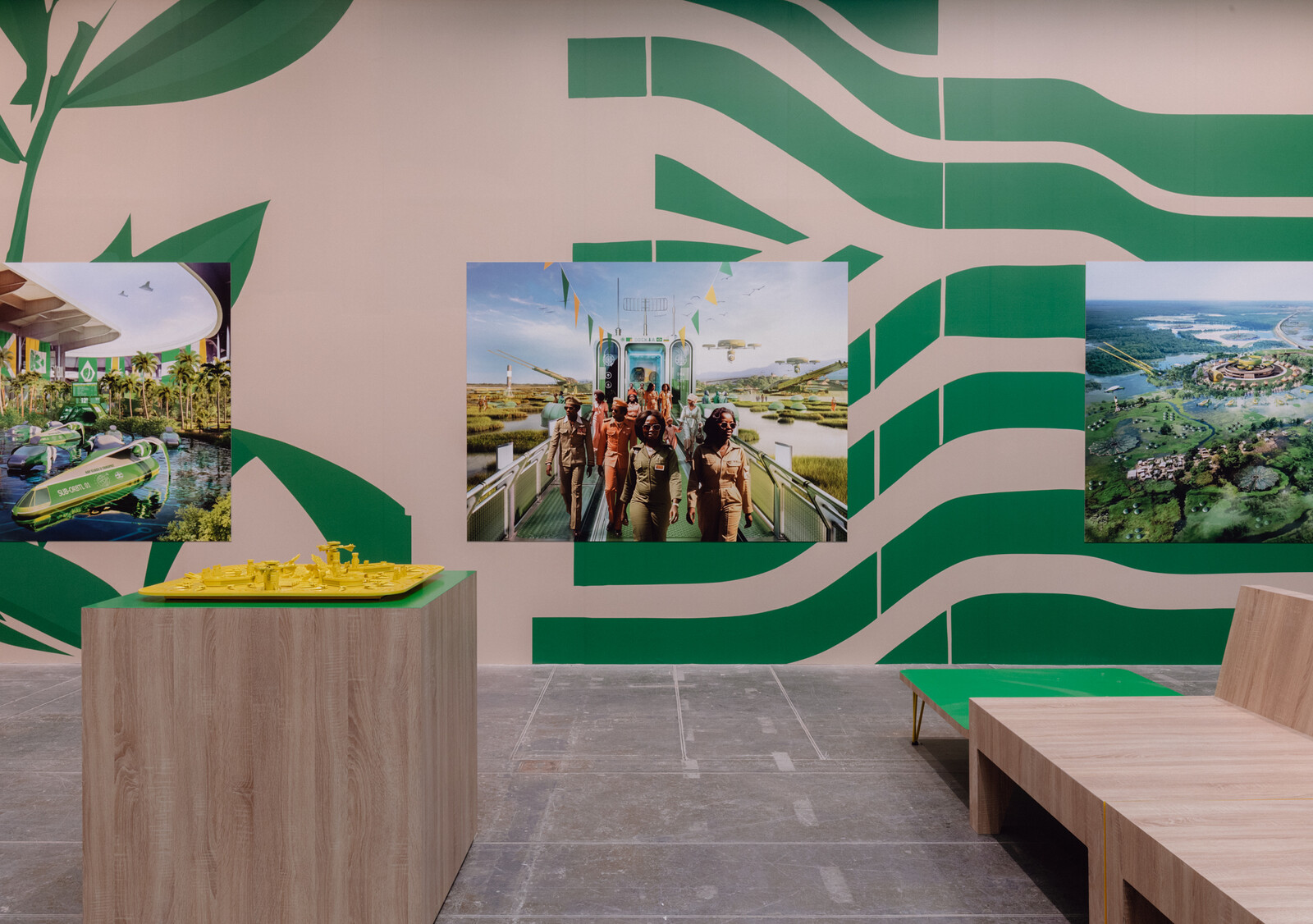


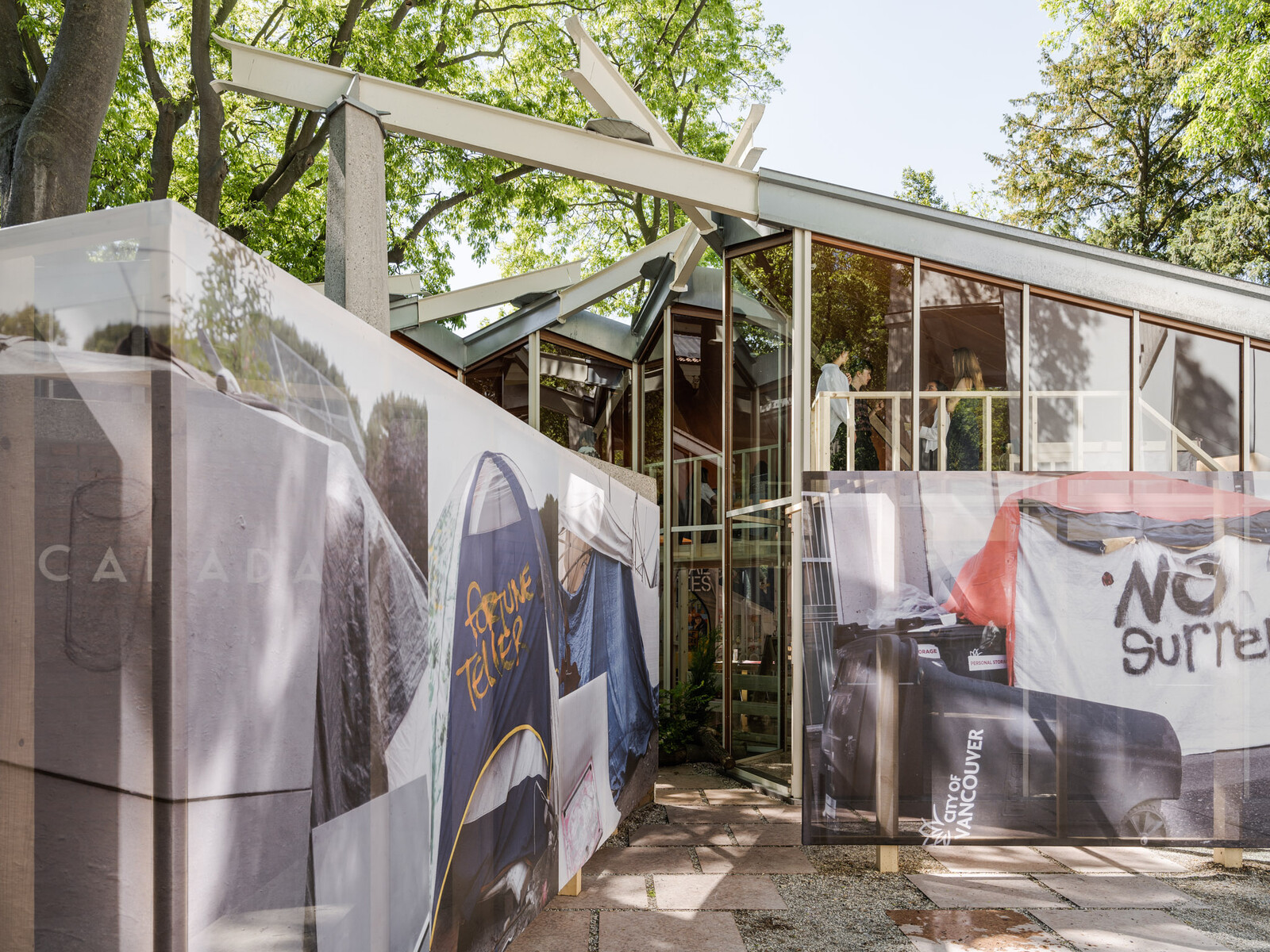
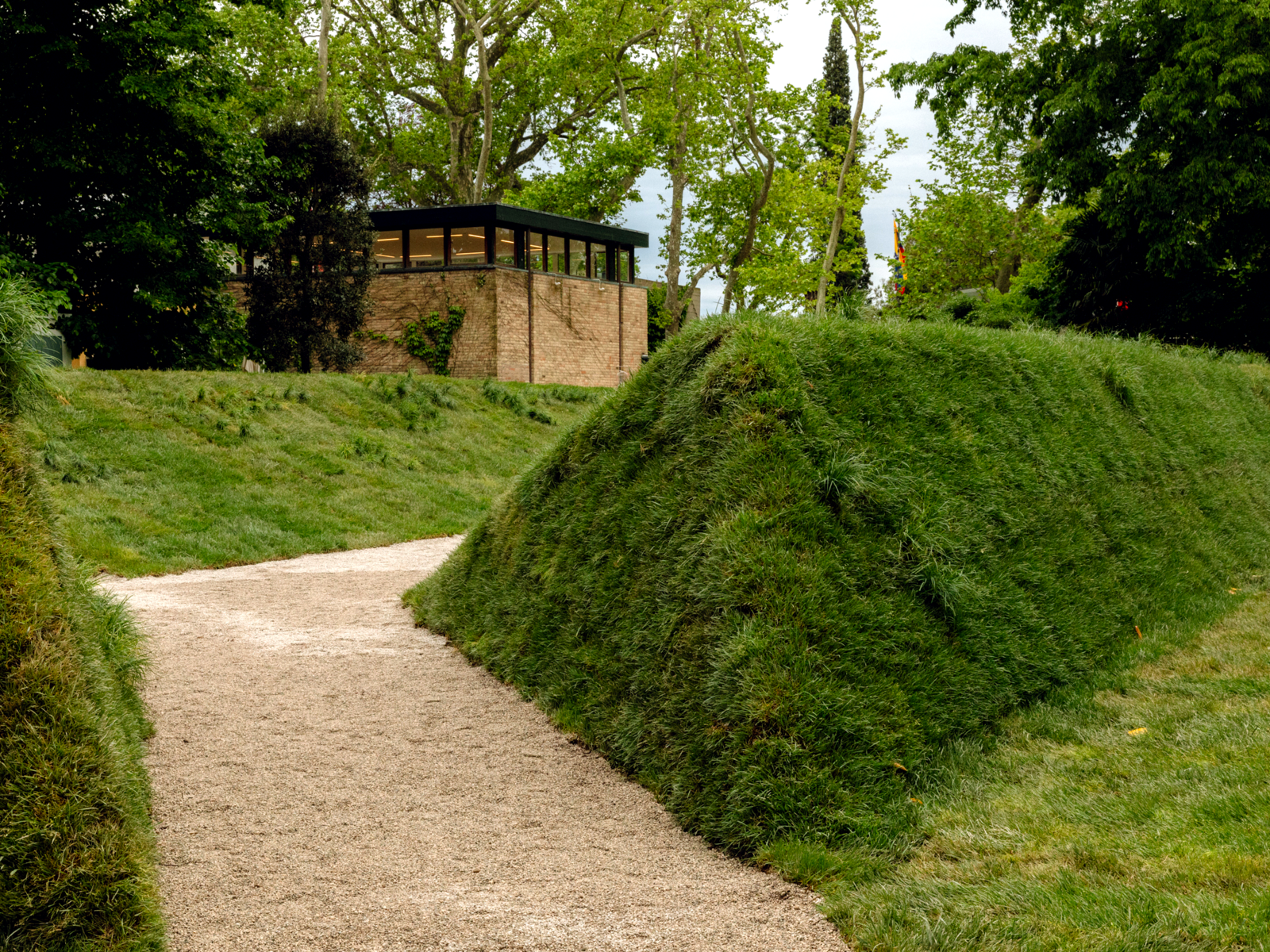
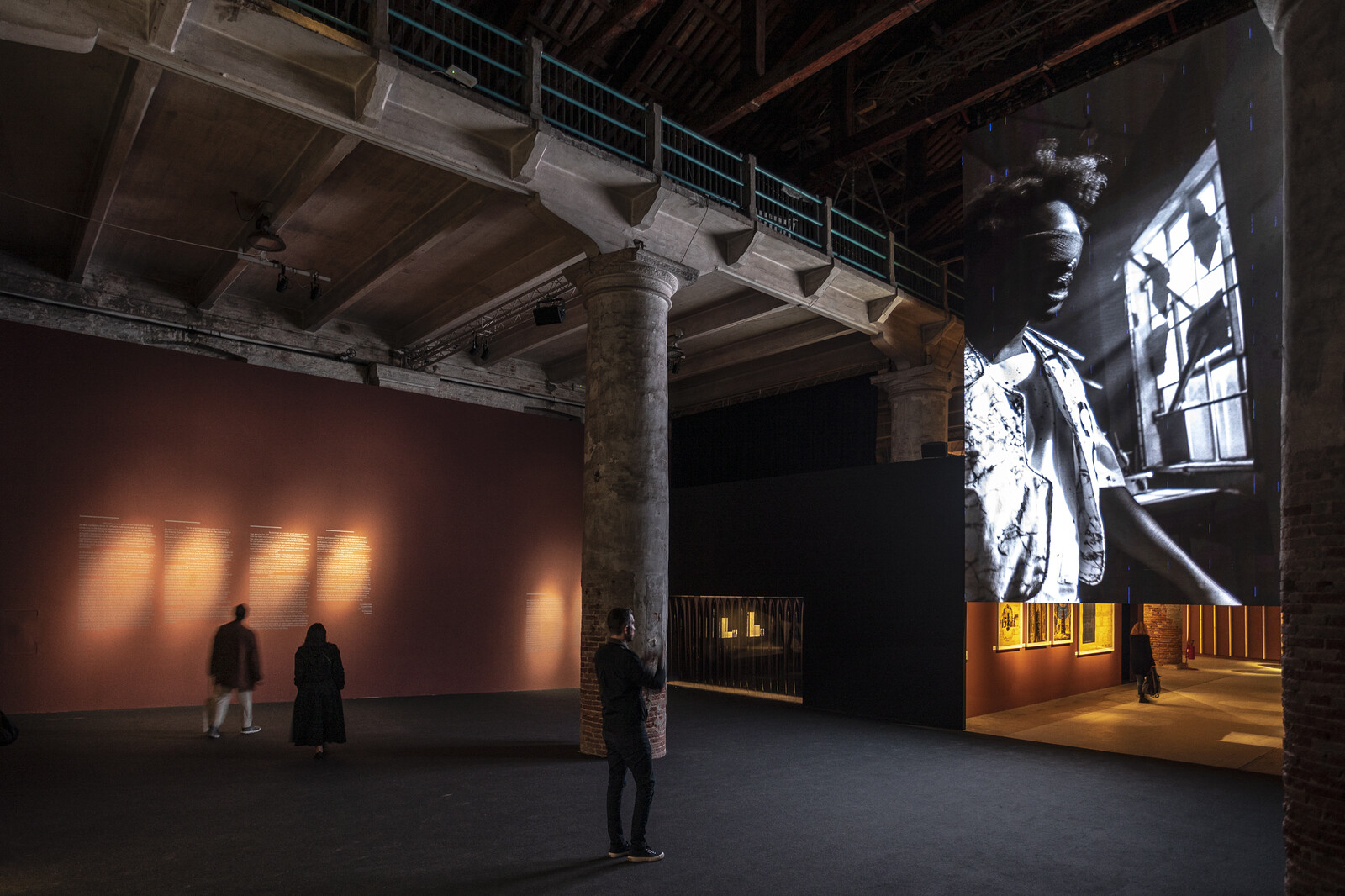
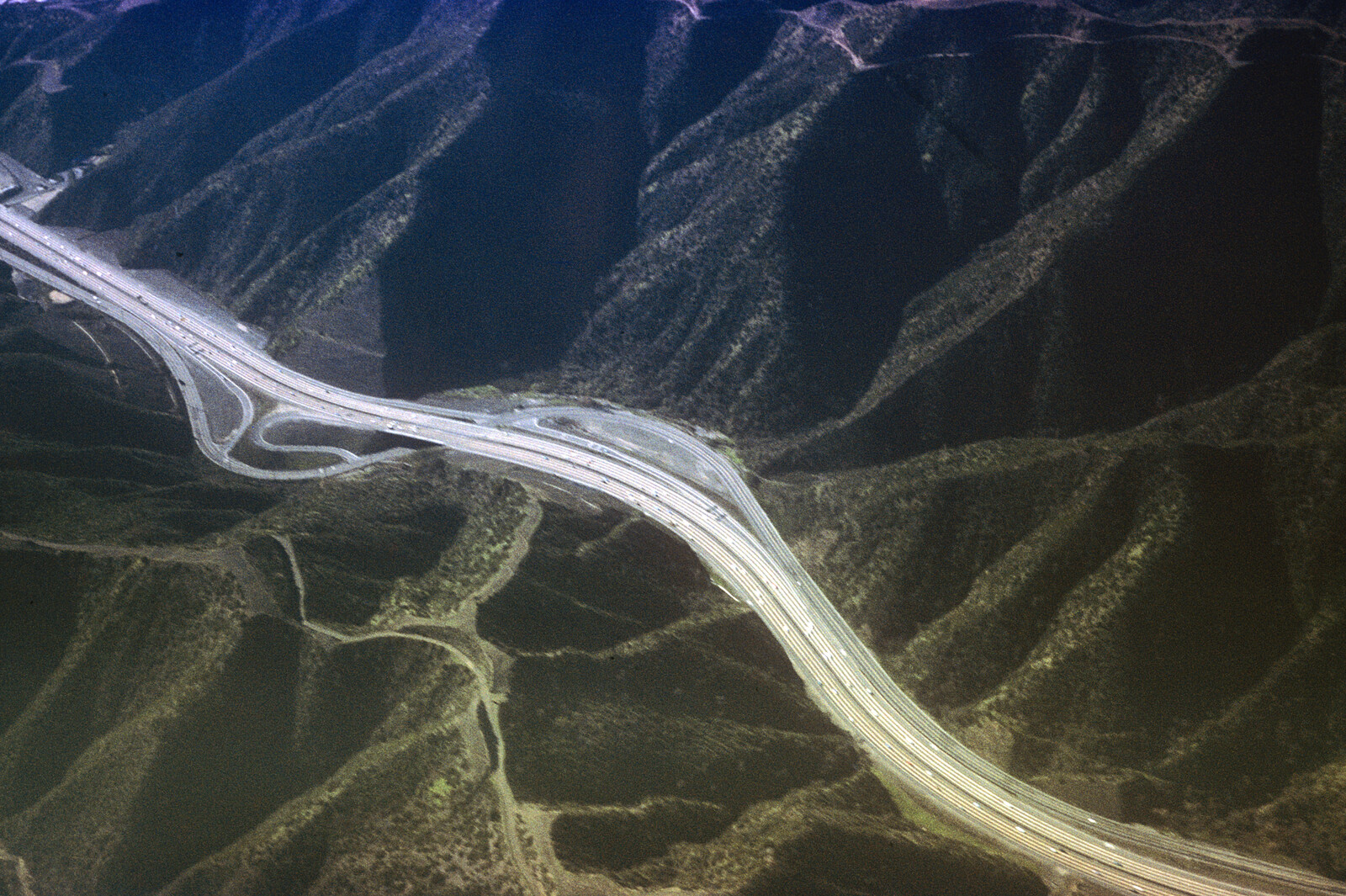
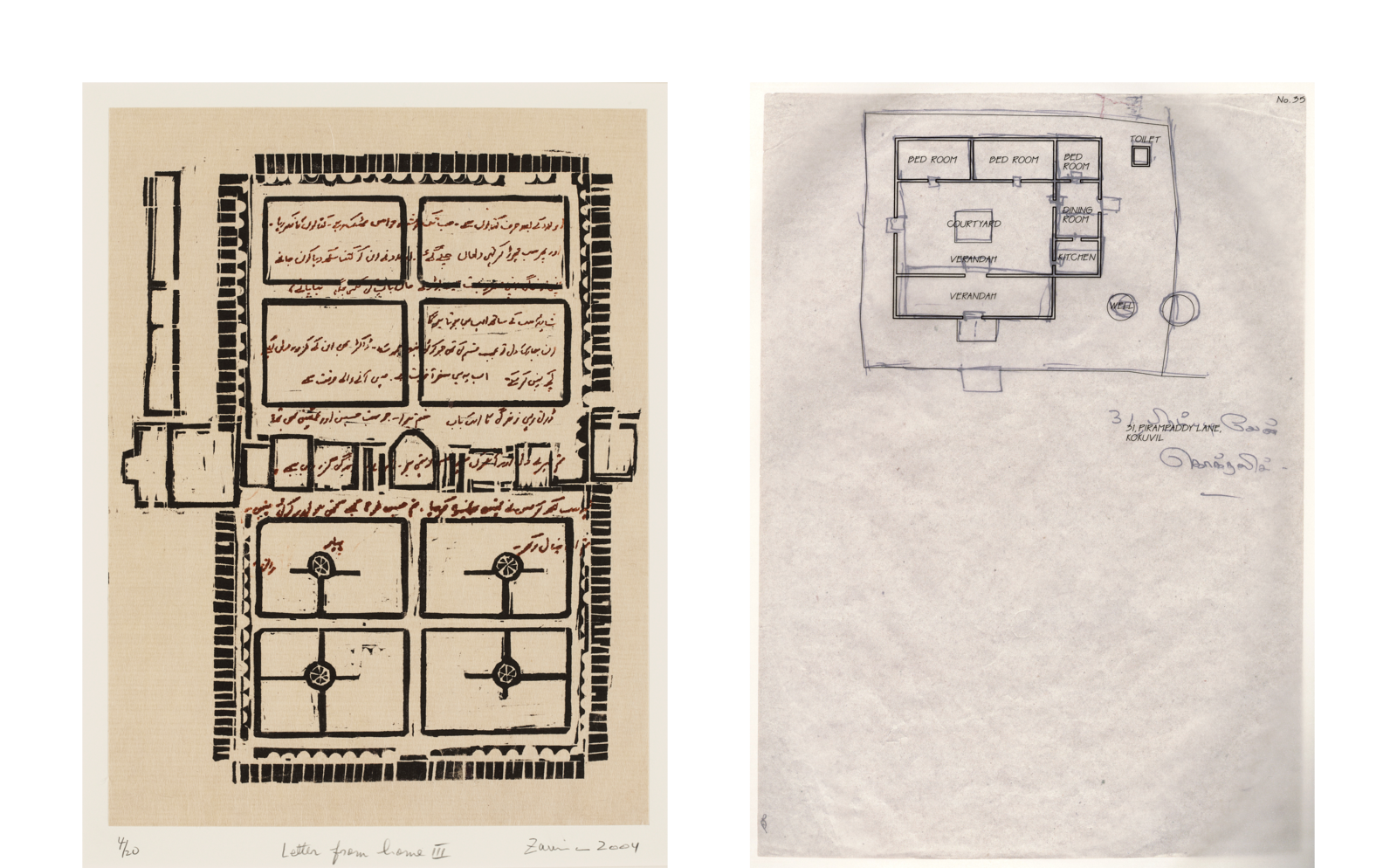

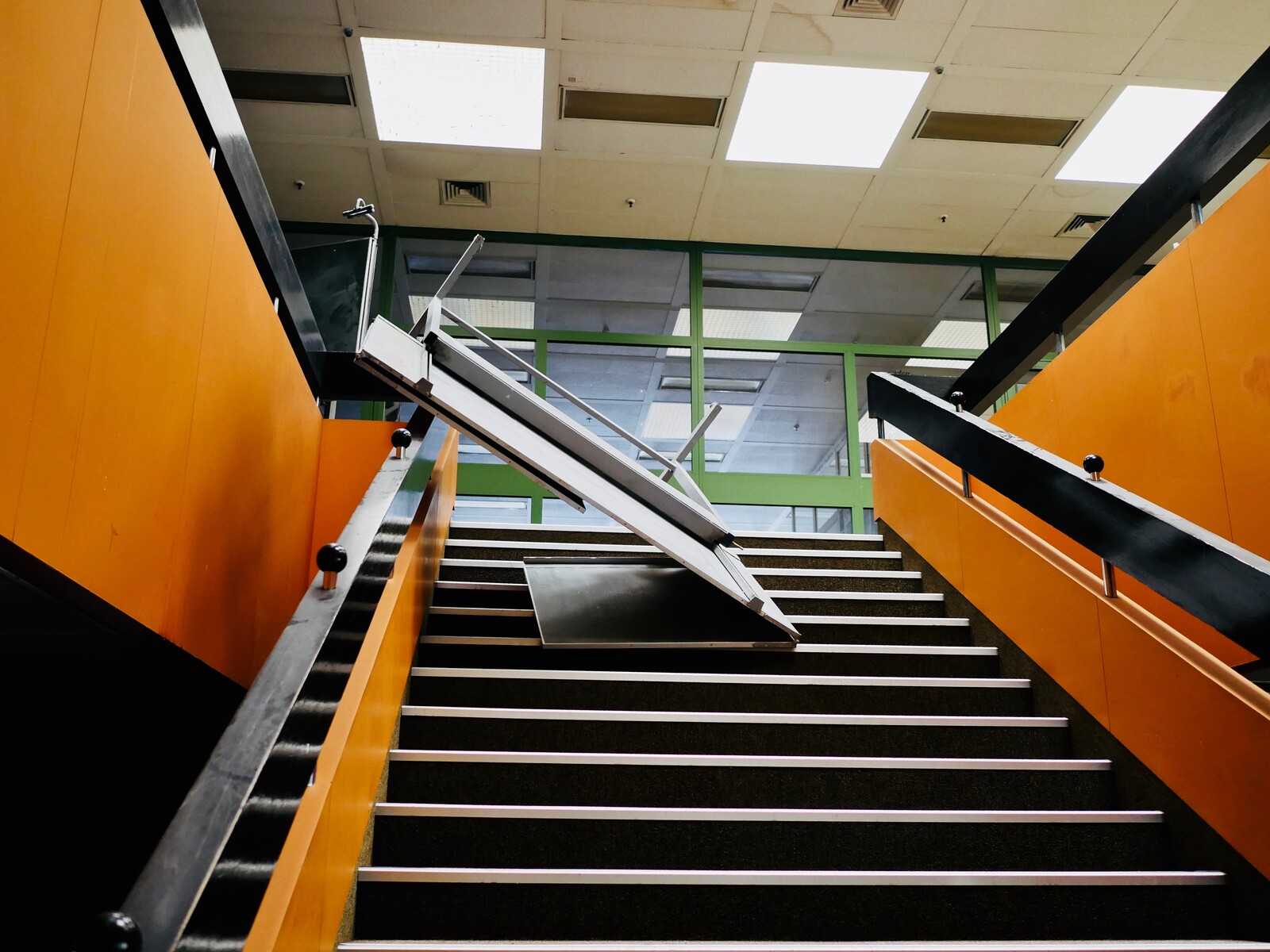
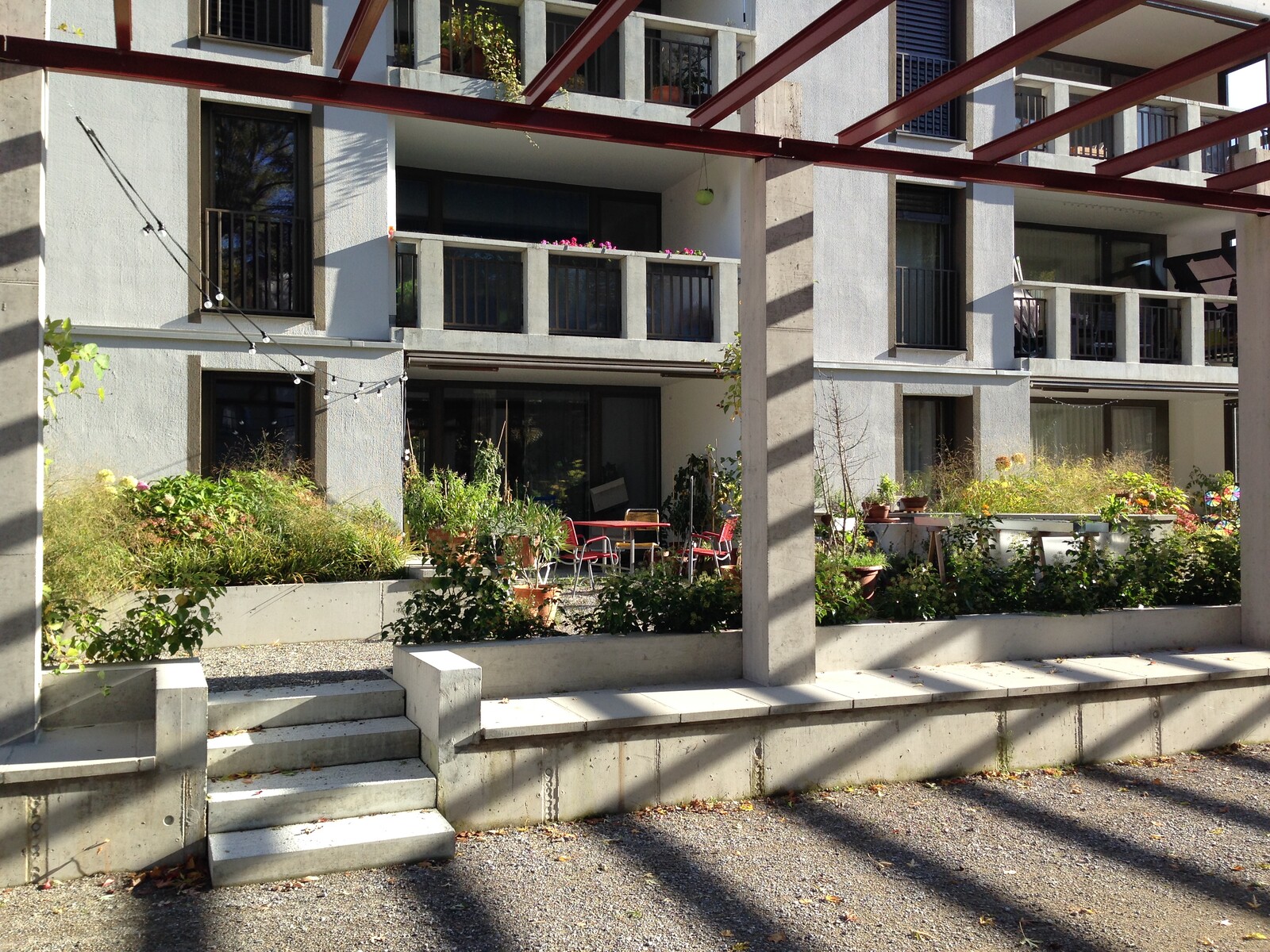

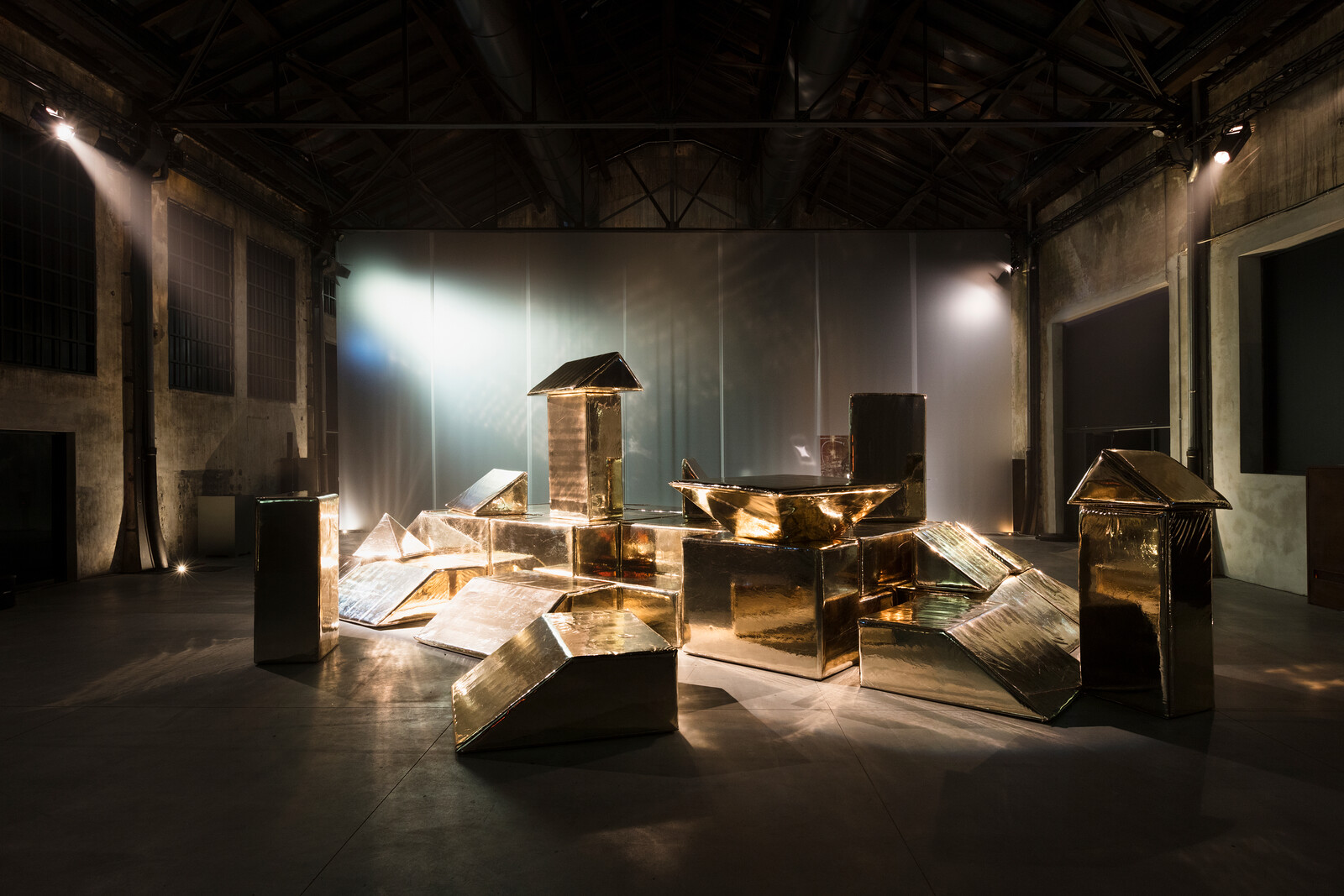
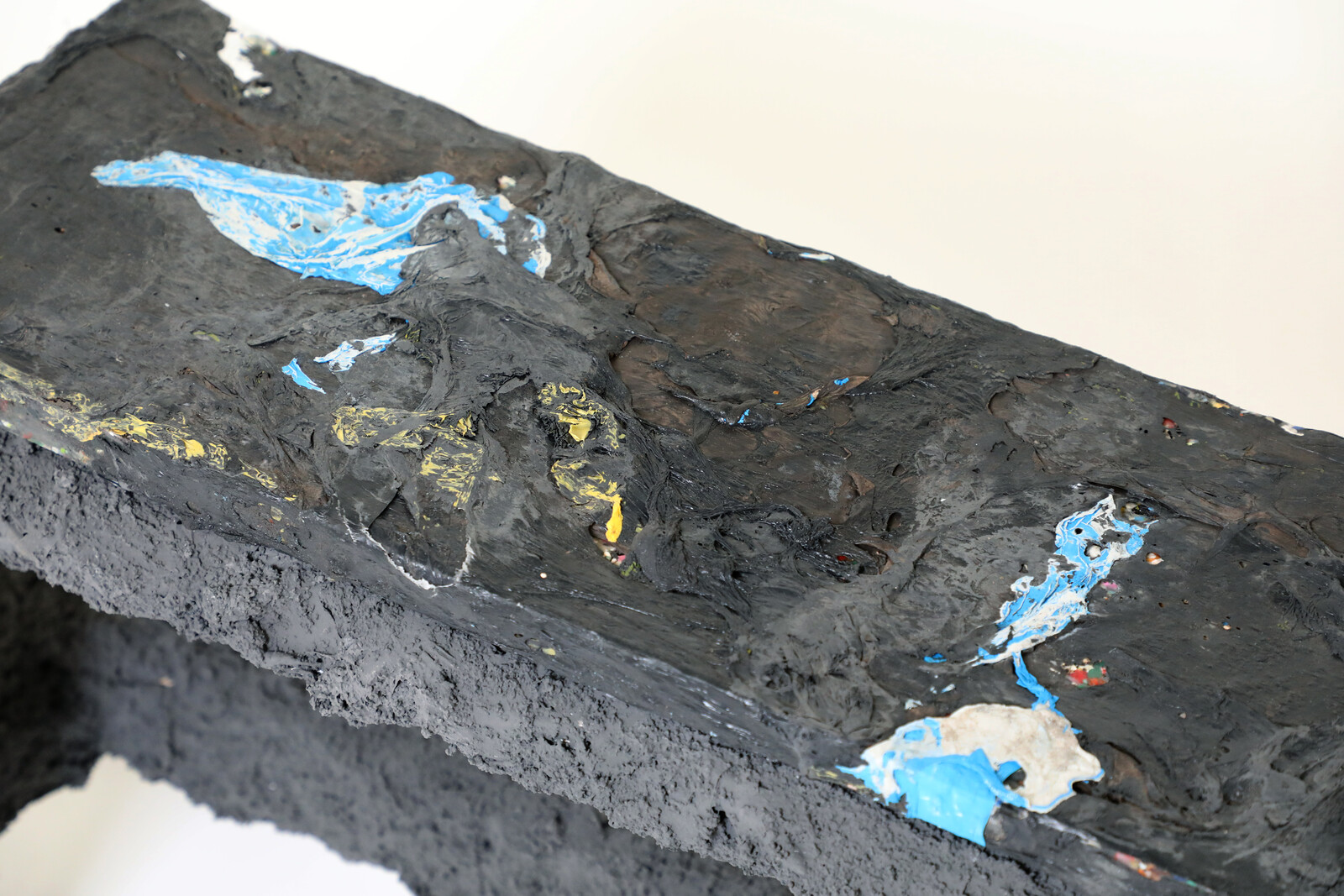
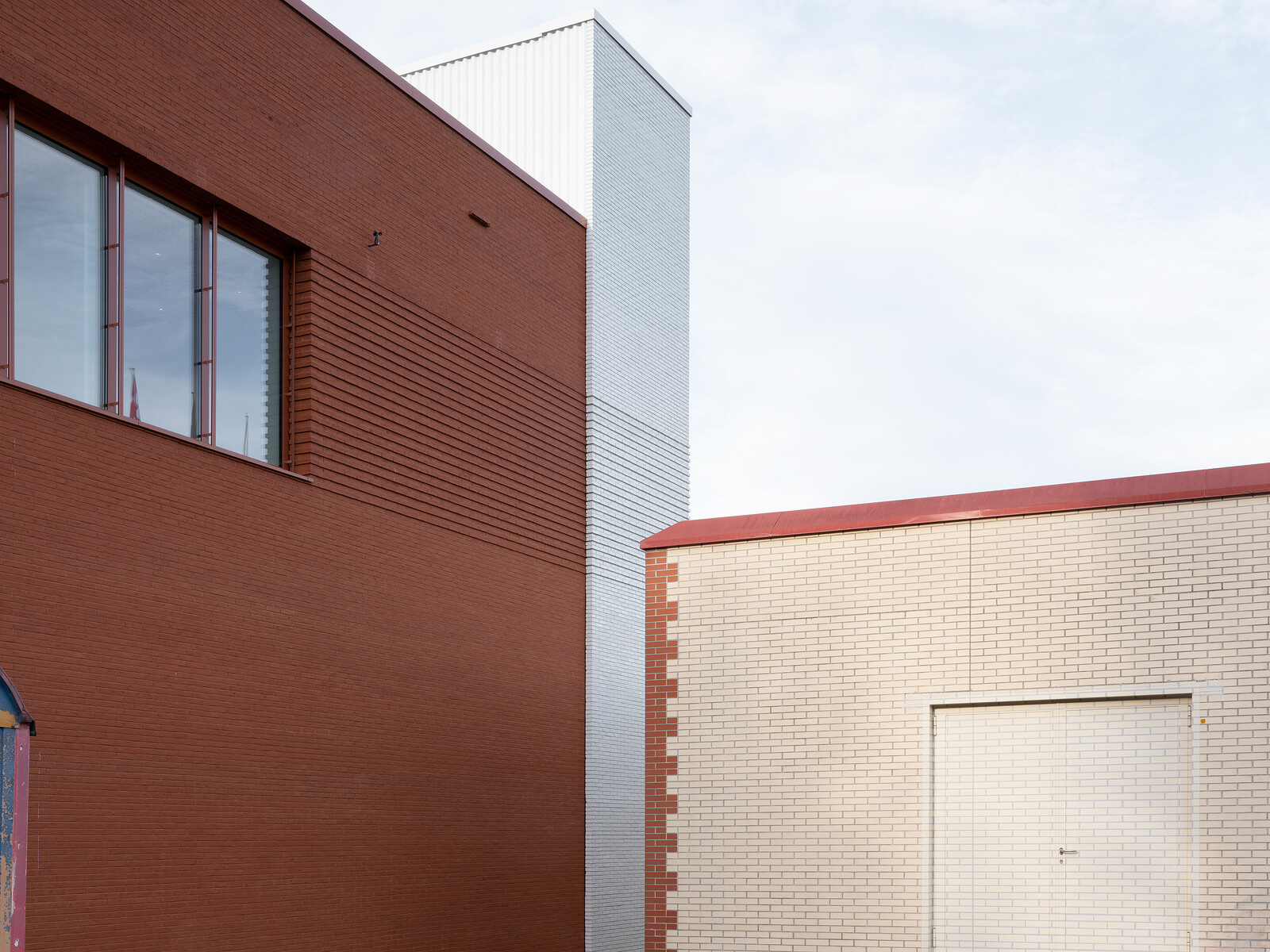
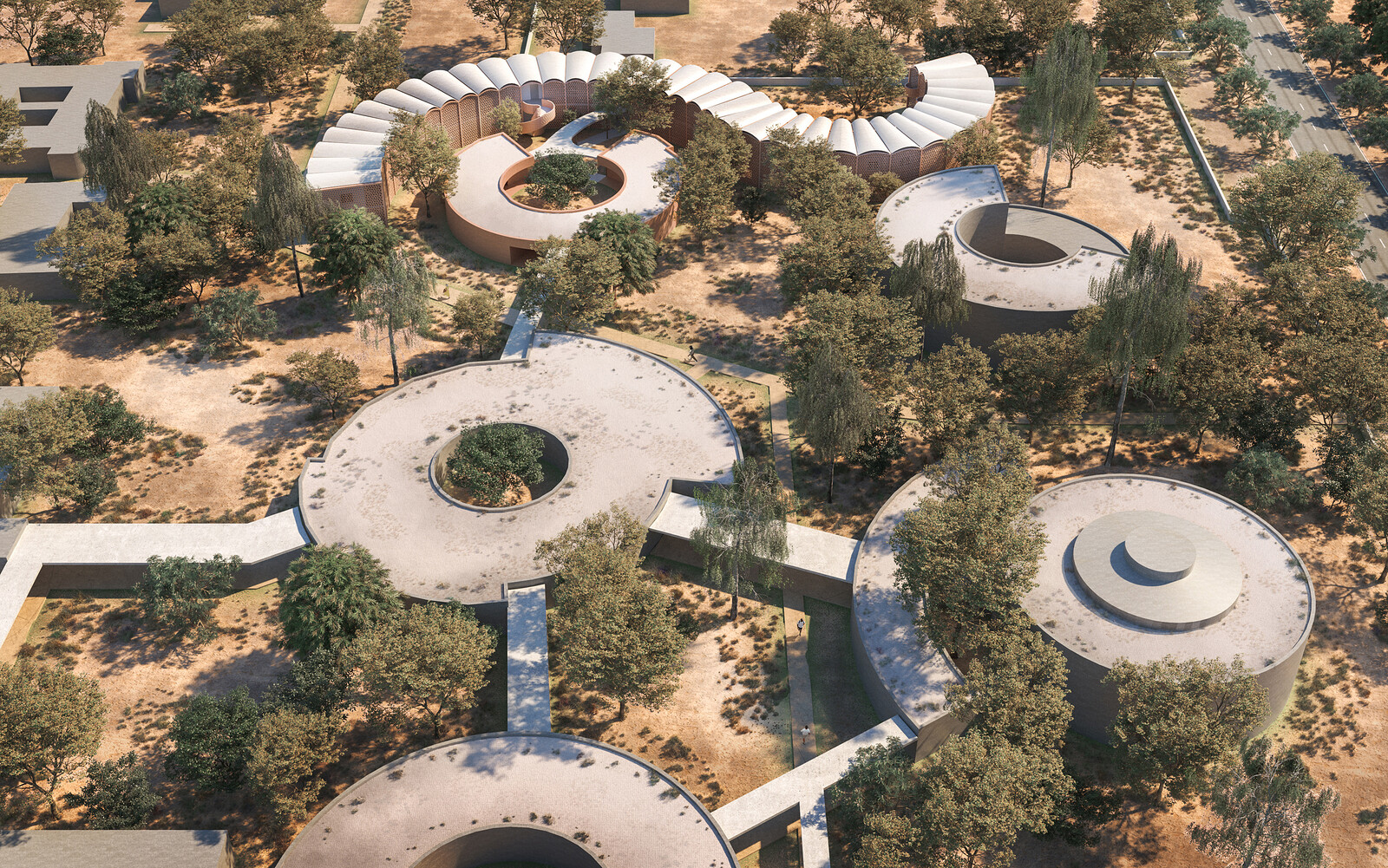



(2014).jpg,1600)

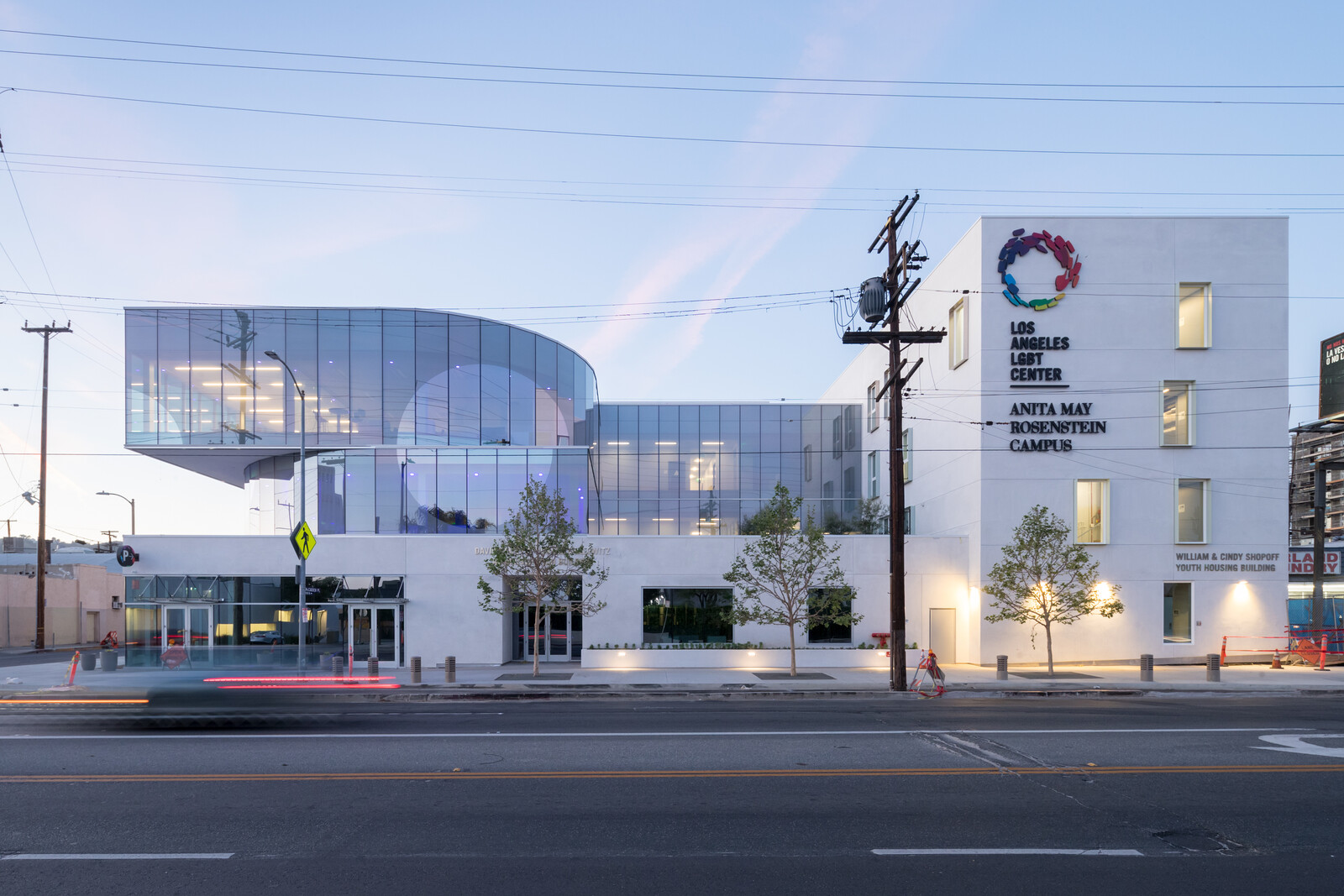
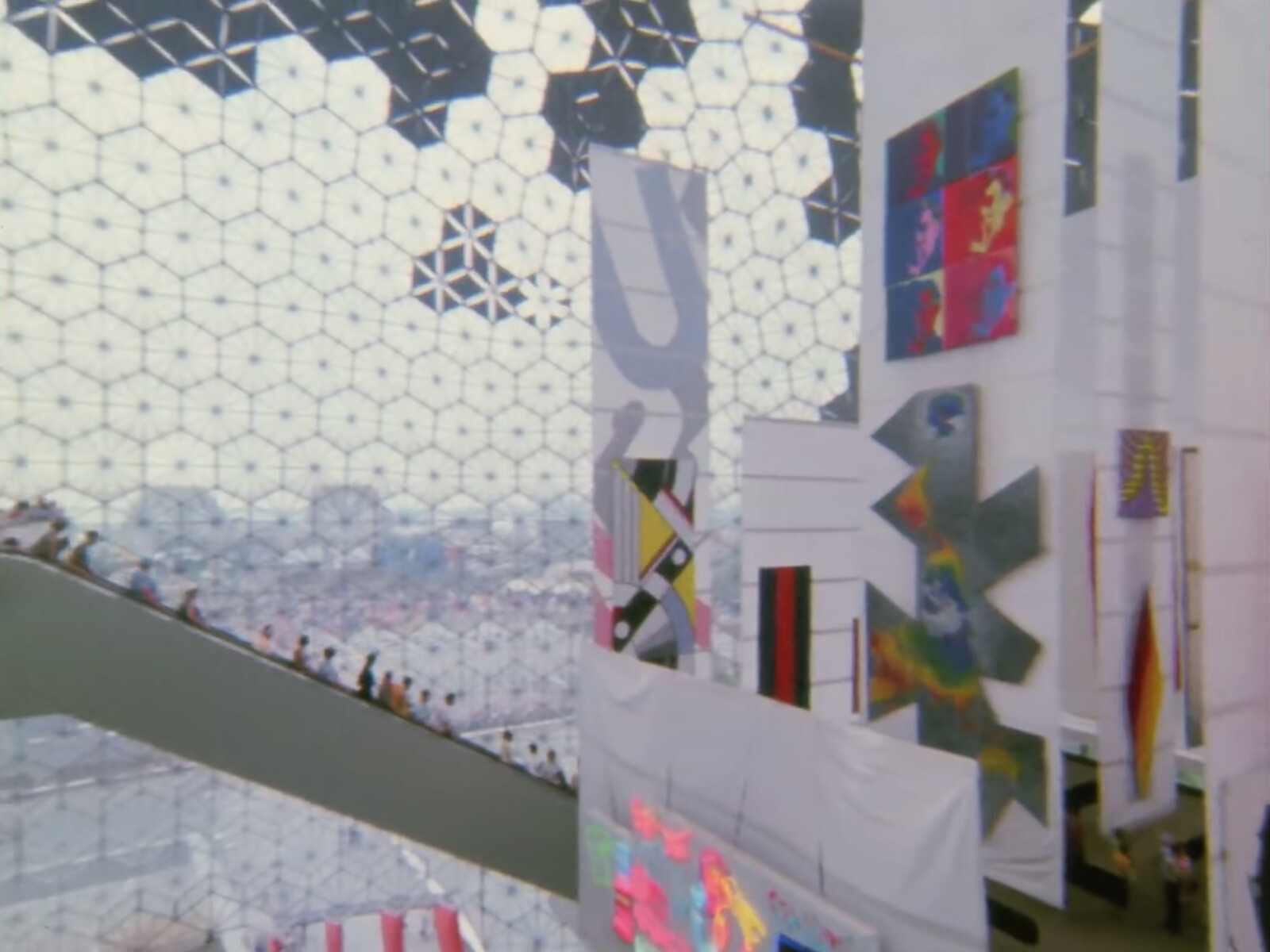


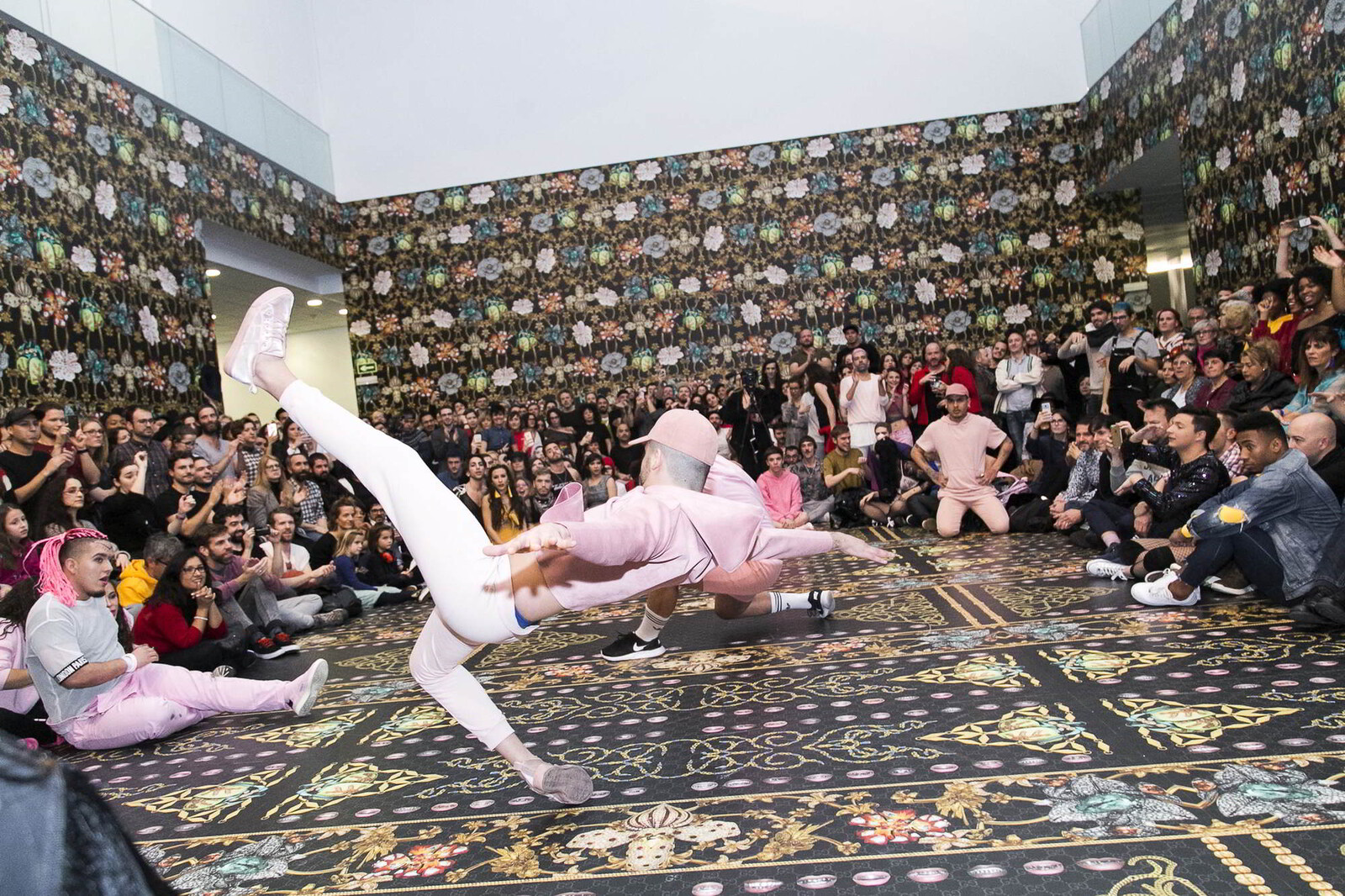
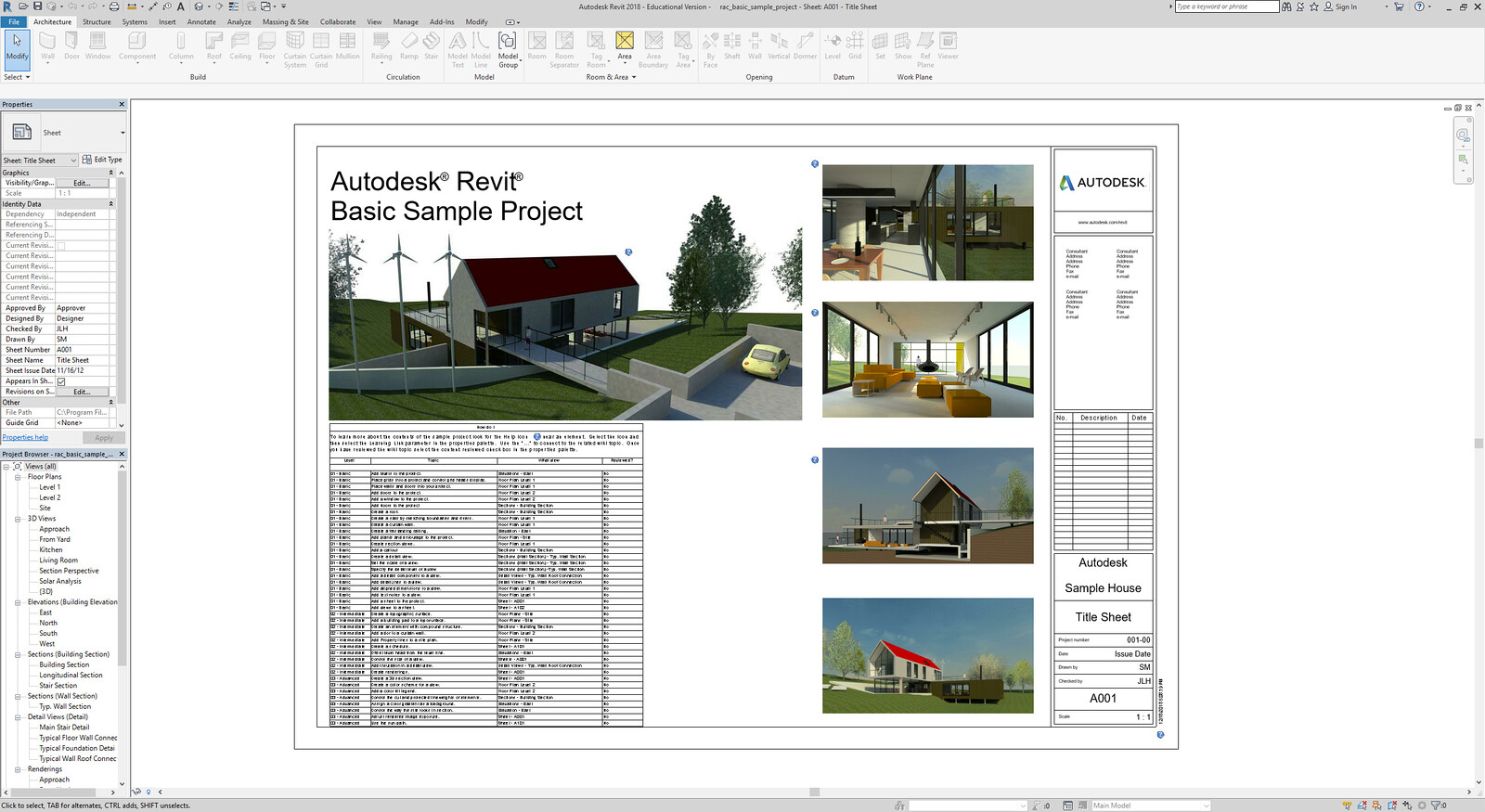



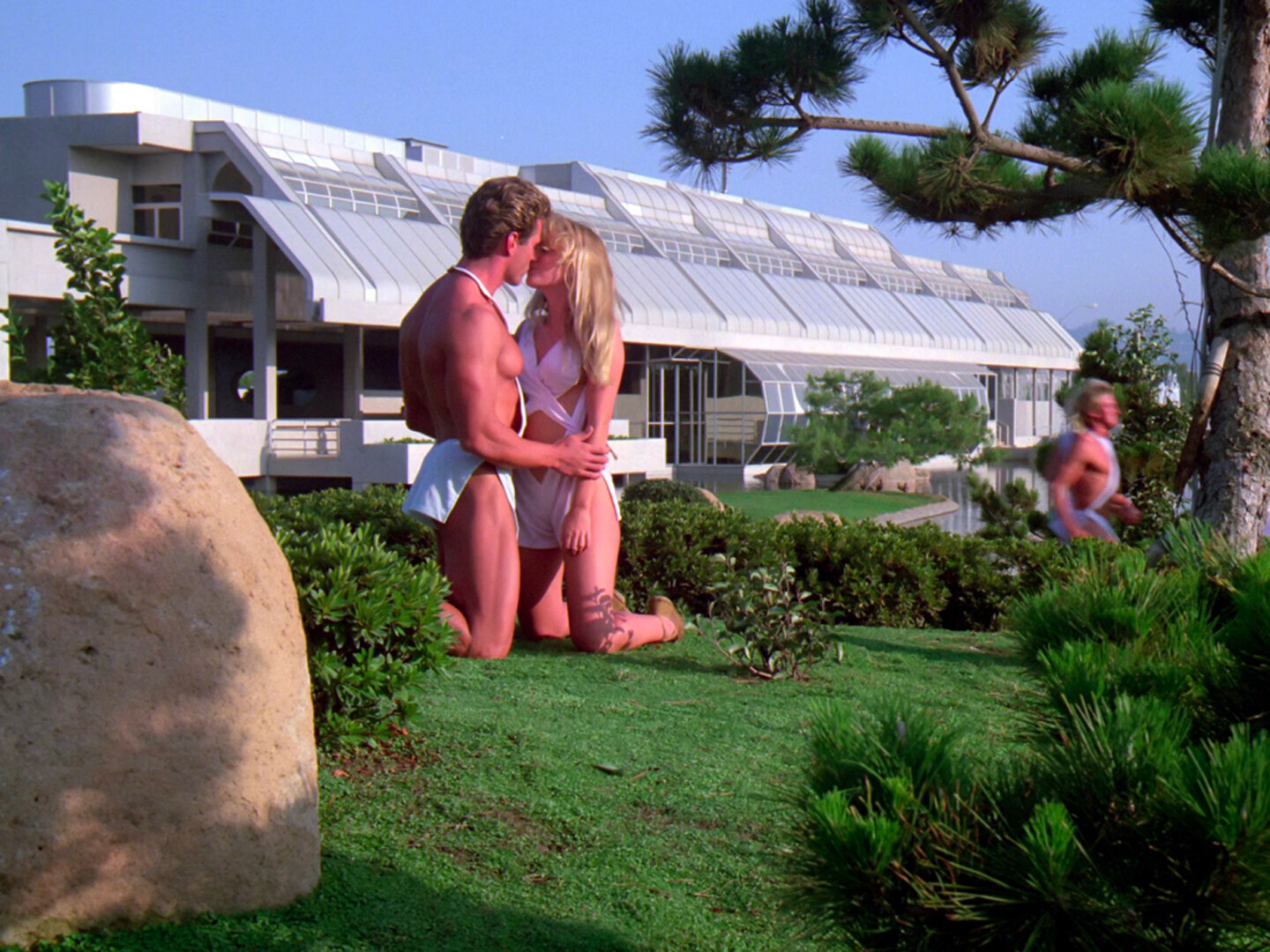
,-2003,-srgb.jpg,1600)
